NORTH CAROLINA ZOO FAST FACTS
LOCATION: Randoph County, NC
HOURS: 9am-4pm
COST: $15 Adults, $13 Seniors, $11 Kids (2-12), under 2 are FREE
TIME TO COMPLETE: 4-6 hours
ACCOMODATIONS: Large parking lot, public restrooms, food courts and Gift Shop
If you were asked where the world’s largest natural habitat zoo is located your first thoughts might naturally turn to San Diego or South Africa. We’re guessing the Tar Heel state probably wasn’t even on your Top 10 list. The North Carolina Zoo has 2,600 wooded and 500 developed acres that is home to over 1,800 animals and 250 species. It is very well designed for any visitors from toddlers and seniors to teenagers and parents. All paths are paved and there is plenty of room and vantage points to view all of these magnificent creatures.

The zoo was begun by the Raleigh Jaycees in the late 1960’s and began with just two Galapagos tortoises. Today the entire park can take anywhere from 4-6 hours to traverse. It is broken into (2) primary sections, North America and Africa with (2) hubs for each as well as one, Junction Plaza, right in between. The three hubs have their own restaurants, snack bars, gift shops and picnic areas. For residents of North Carolina the zoo couldn’t be more centrally located just 75 miles west of Raleigh, 25 miles south of Greensboro and 75 miles northeast of Charlotte in Asheboro, NC.
North America Section
Cypress Swamp
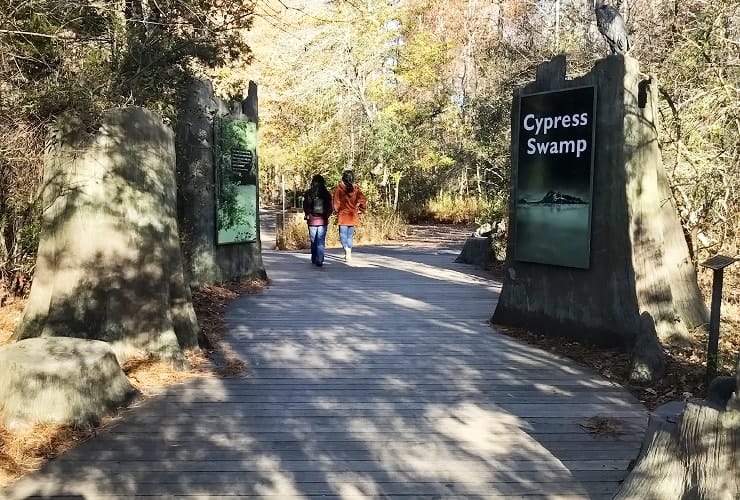
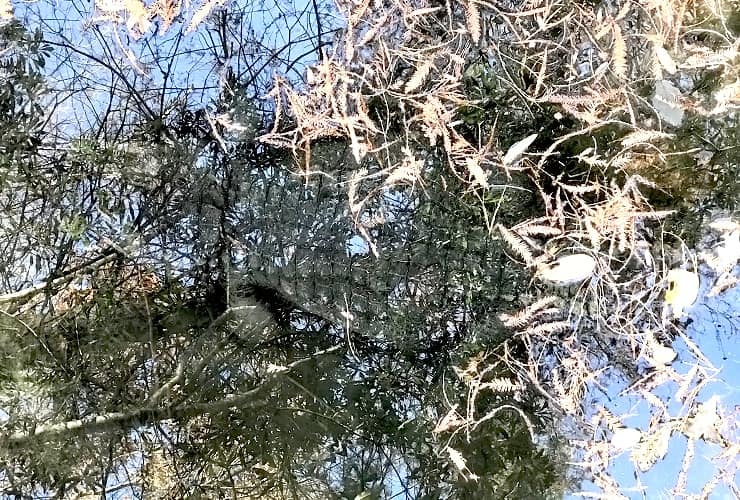
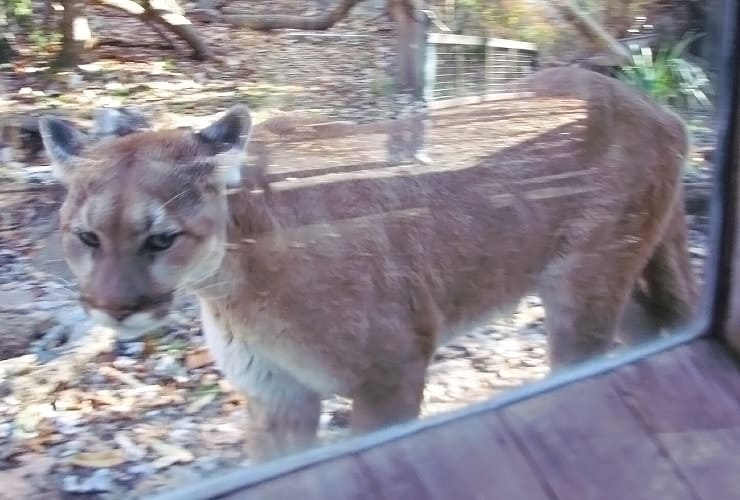
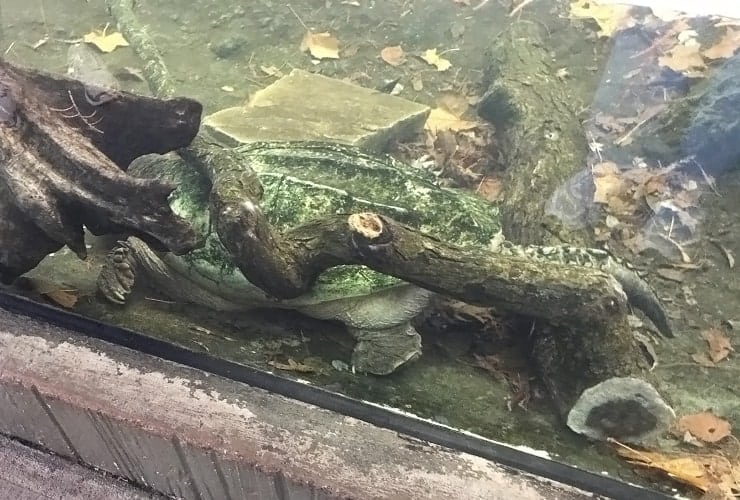
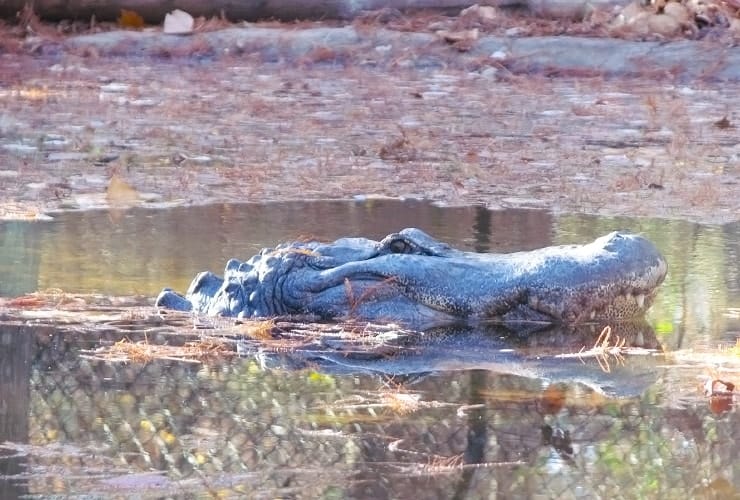
First stop is the Cypress Swamp where you enter the world of the bayou. You’ll see canebrake (North America’s native bamboo) and samples of the Oaks, Cedars and Franklin trees so prominent in swamps. Next up is the alligators whose scaly backs are usually visible just underneath the surface. The cougar display features two cats that seem to be constantly prowling back and forth, not afraid to look you right in the eye. There is a Wetland Homes area featuring Carolina Gopher Frogs and a huge Alligator snapping Turtle. As you complete the loop you may get lucky and spot the head of an alligator just above the top of the water.
Rocky Coast
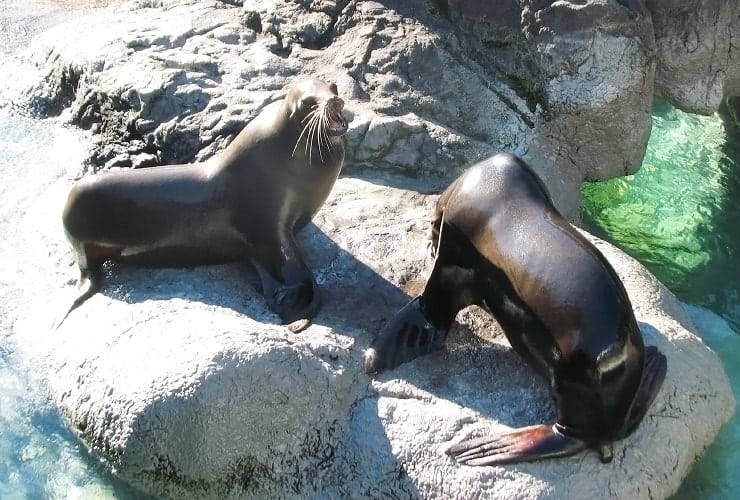
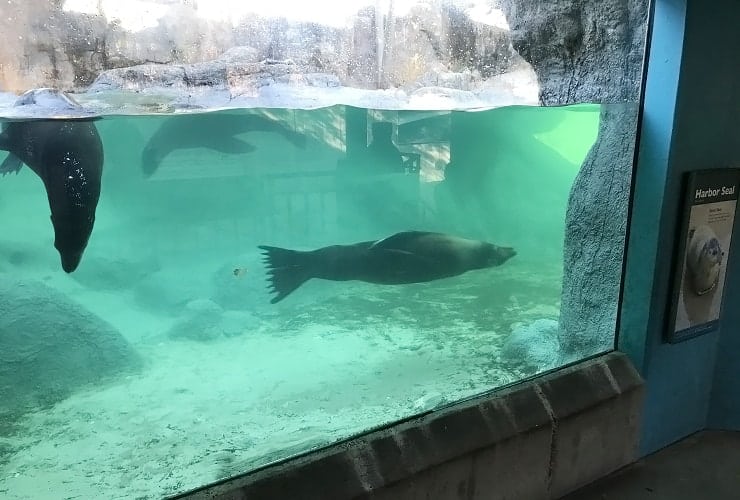
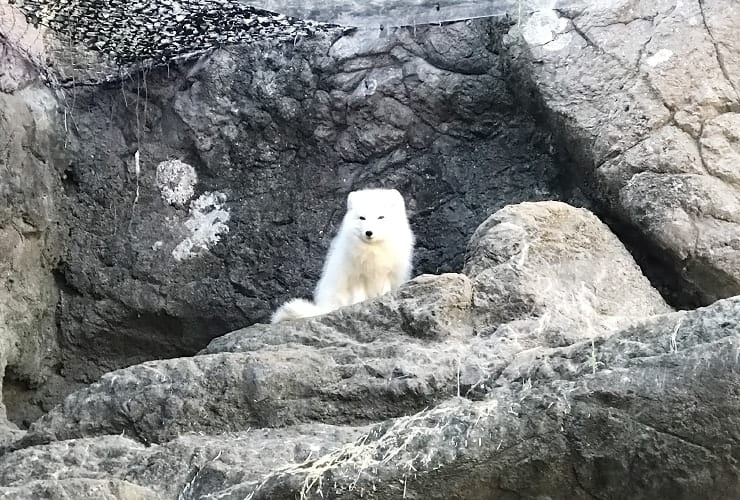
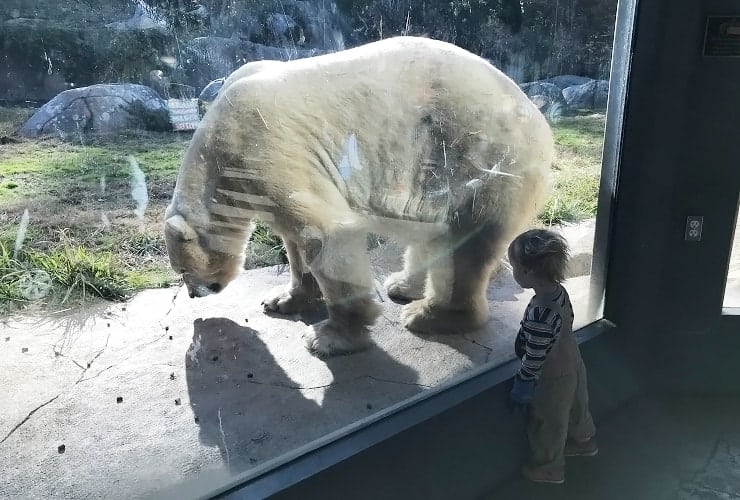
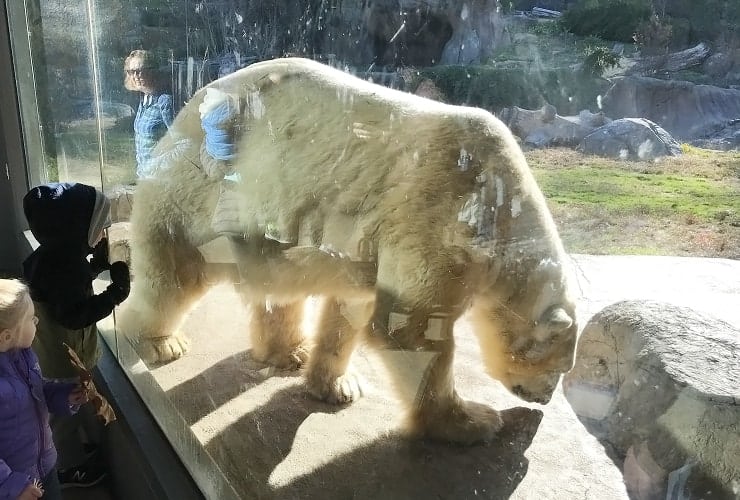
This great series of exhibits showcases animals of the arctic. You’ll see a Peregrine Falcon, the fastest animal on the planet, capable of reaching speeds of 200 mph (322 kph). Next up is the upper deck, then the lower, viewing of harbor seals. We preferred the lower as you really get to see how graceful these magnificent creatures are in the water. The sea birds exhibit suffered a bit from the moisture on the glass but the real treat was watching the Puffins dive underwater in search for food. If you’re lucky you’ll get a look at the stunning, albeit shy, arctic fox. Next to the fox den is where you might get a chance to view a polar bear up close. We just happened to time things perfectly and spent a good 10 minutes with this largest of all bears on the planet.
Streamside
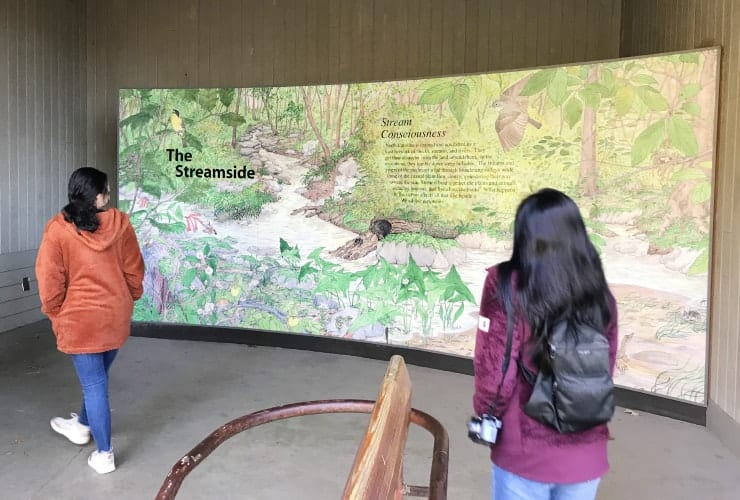
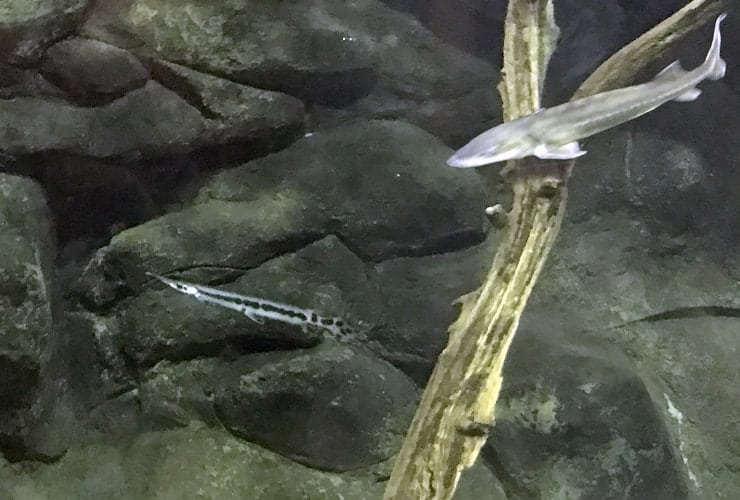
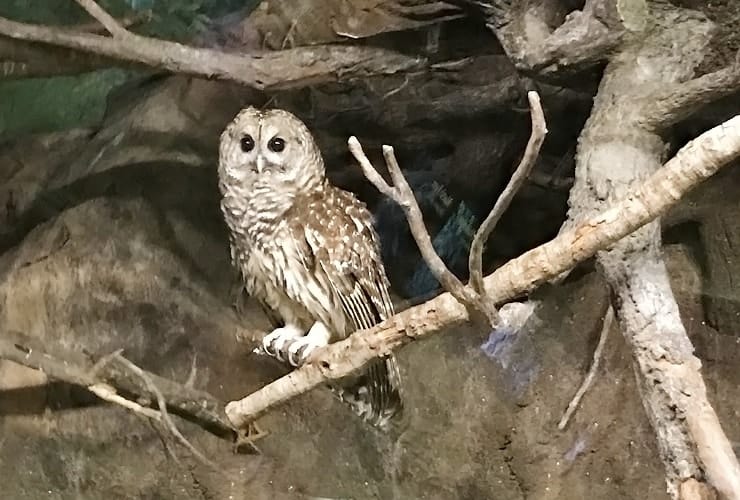
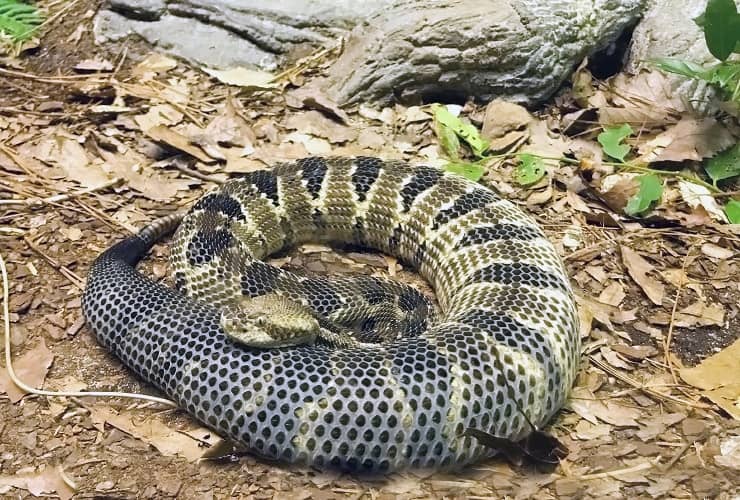
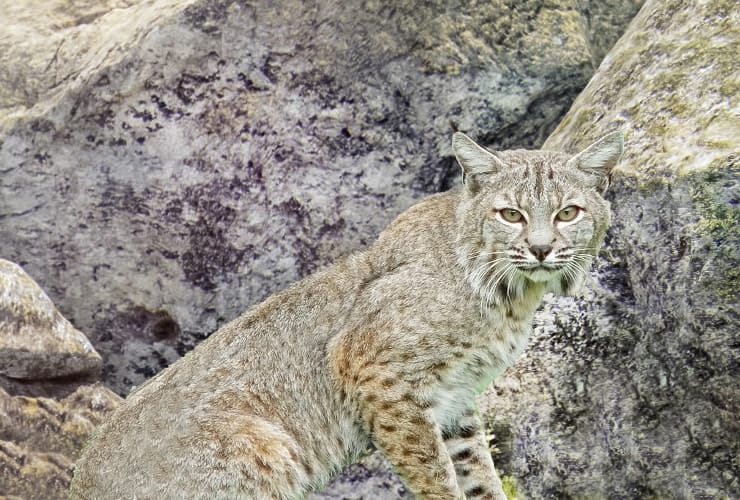
Streamside is a series of indoor exhibits featuring animals who live in, or feed along, streams. You’ll see Hellbender Salamanders, Shallowtail shiners, Creek chubsuckers, Longnose Gar, a Shortnosed Sturgeon and a North American River Otter. The next section has a lot of my favorites . . . snakes. There are Copperheads, Cottonmouths and Timber Rattlesnakes and even a display that talks about the “benefits of snakes” and the role they play in nature’s balance. The last exhibit is the solitary and territorial bobcats. They tend to stay in the back in the rocky crevices and blend into the dense brush.
Black Bears
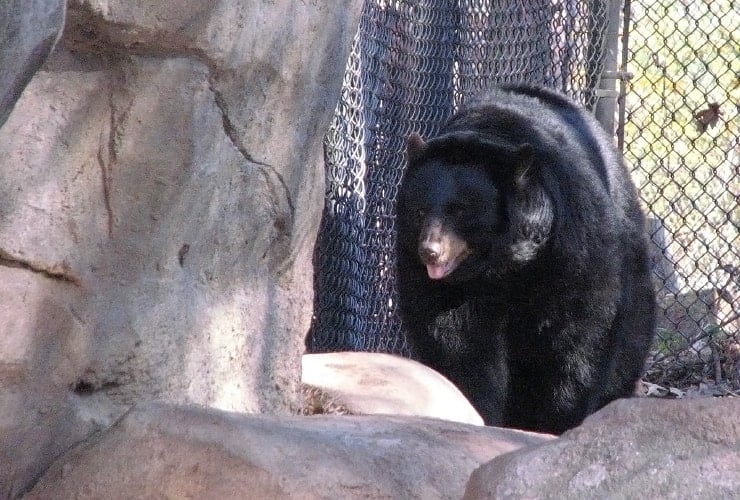
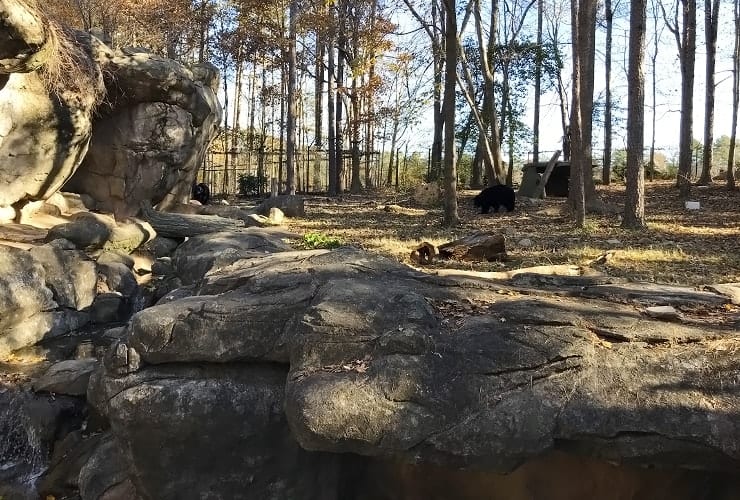
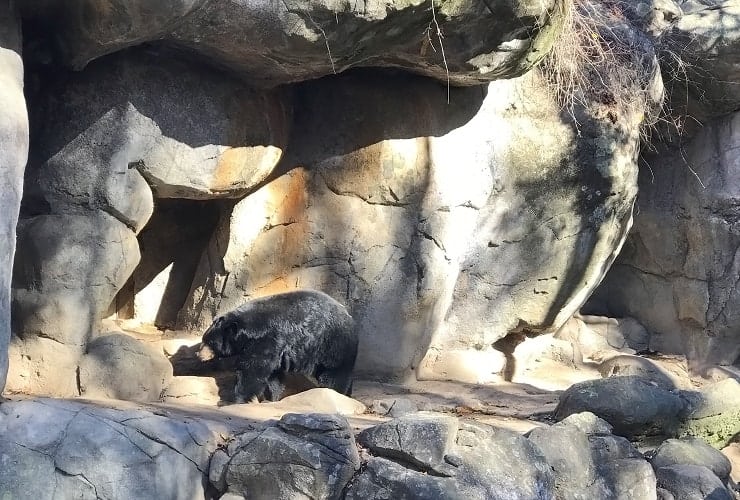
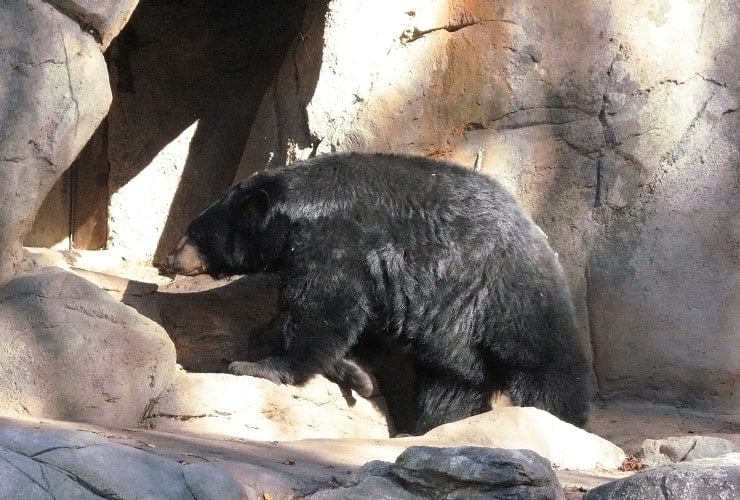
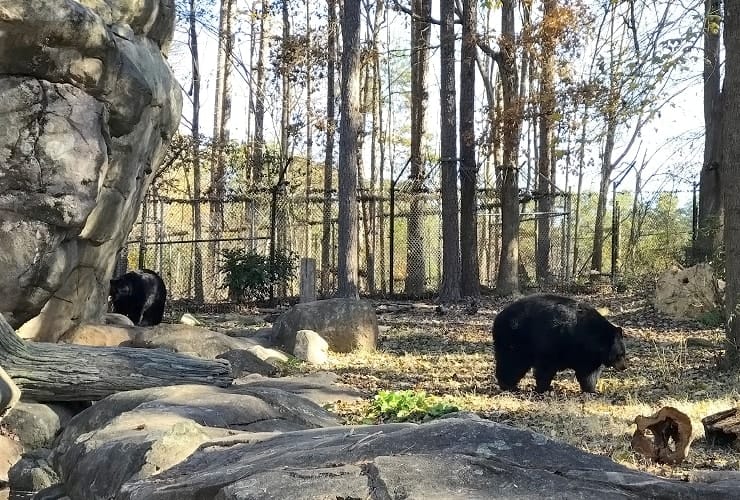
The black bears are surprisingly nimble given their size and the terrain they prefer. The exhibit has a male and a female and is well designed for viewing though only at a distance. The male was content to pace back and forth in the back corner but the female walked around a bit in search of food. Interesting to note that, despite their name, black bears can also be blue-black or blue-gray, brown, cinnamon, or even (very rarely) white.
Prairie
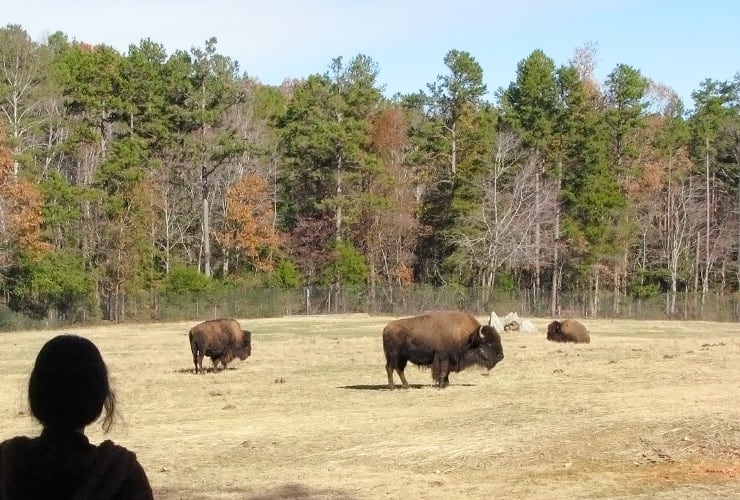
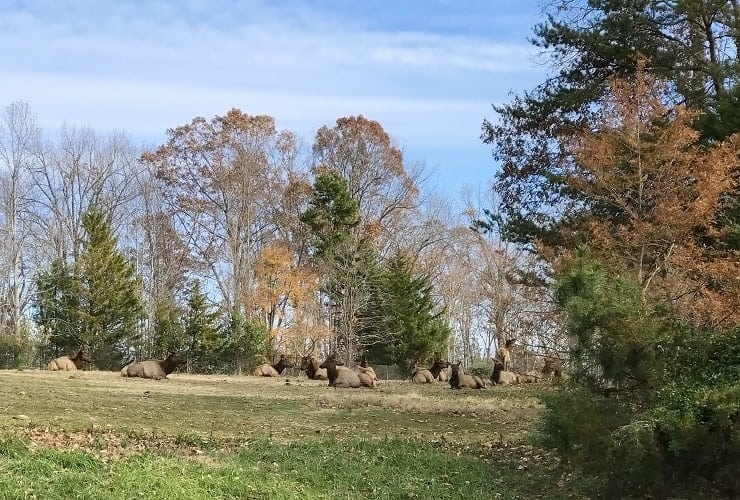
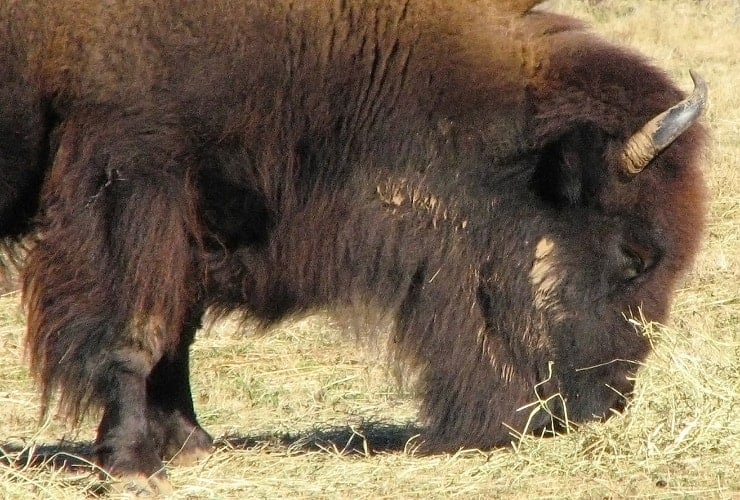
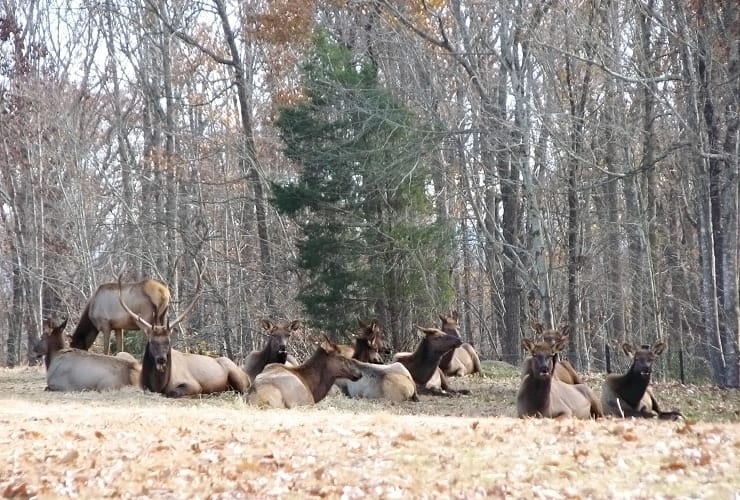
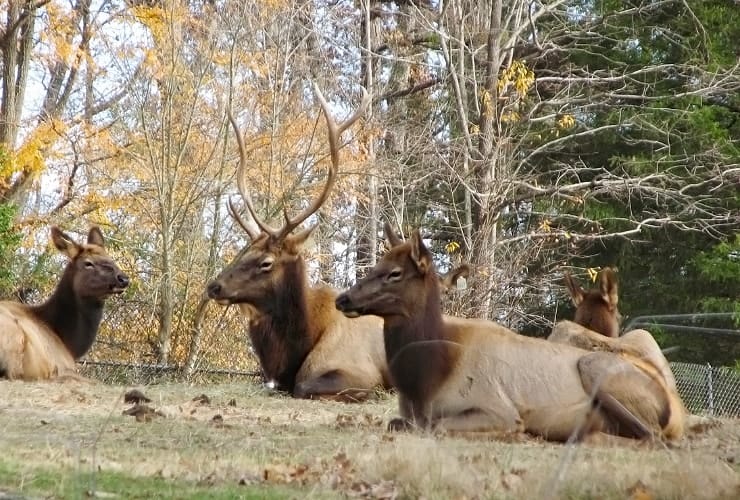
The Prairie represents one of the beauties of the North Carolina Zoo, a completely open space where the animals can roam freely and behave much as they would if they were in the wild. Additionally, the zoo has provided multiple view vantage points for its visitors so you’ll always get a chance to have a meaningful experience. The Prairie features bison and elk. The Bison are iconic as they feed on the short grass on an open plain. The Elk herd were literally immovable save for an occasional stretch here and there. There is also a seasonal Prairie Geyser located at the second viewing point. It “erupts” every (5) minutes but only in the warm months, not when the temperature gets below 70°.
Grizzly Bears
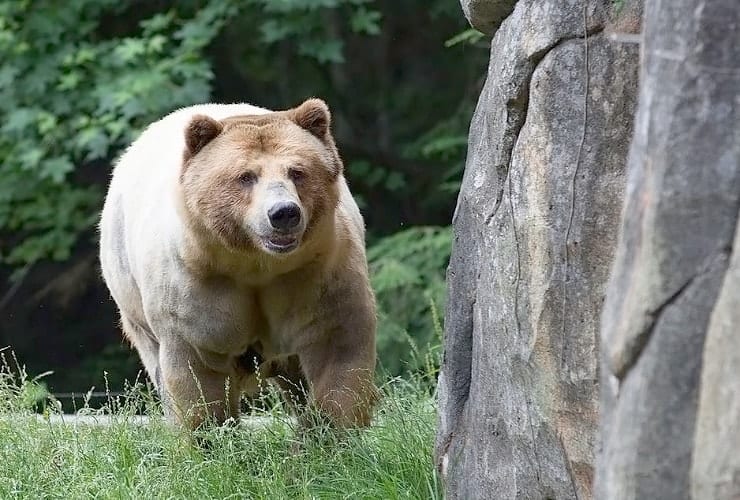
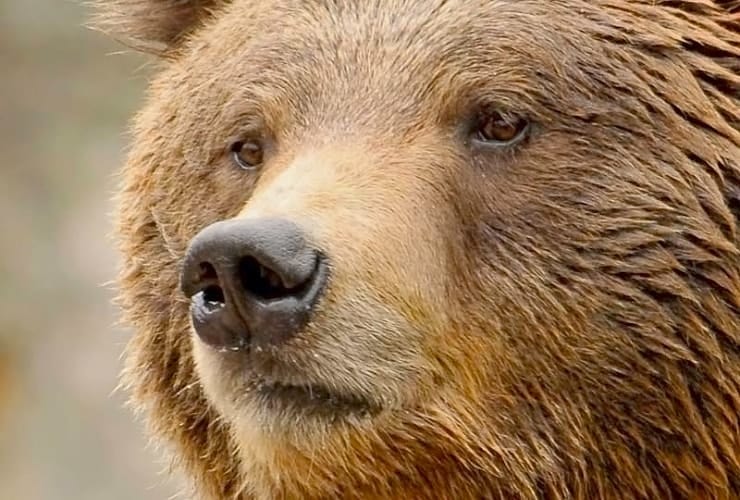
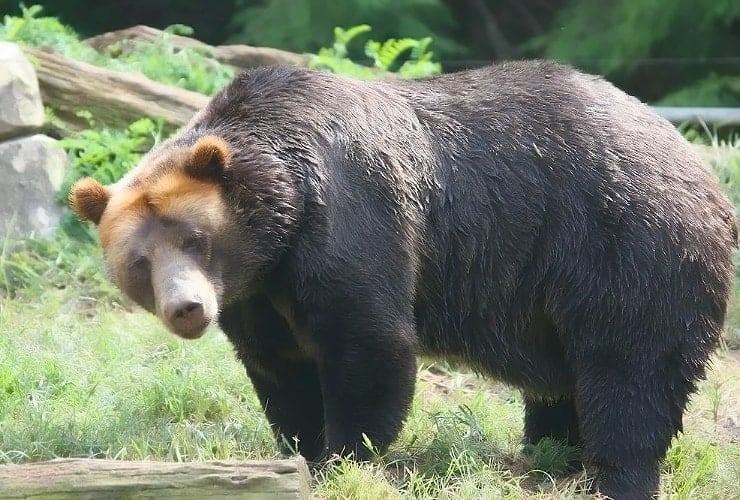
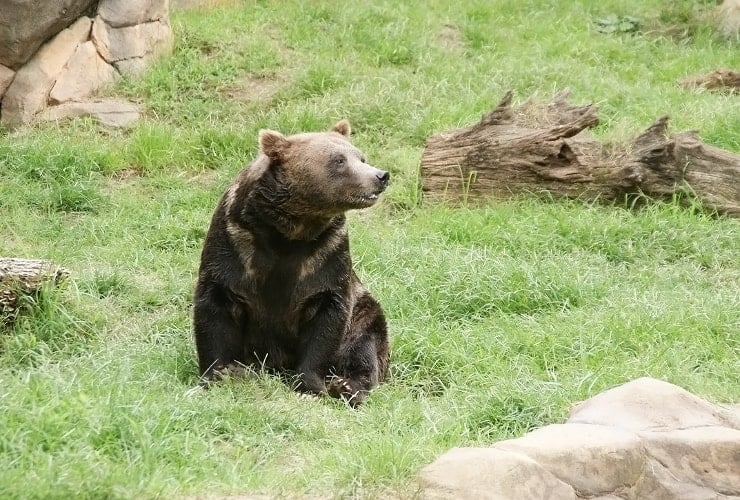
Grizzly bears own a reputation of fierceness unmatched by much of the animal world yet they are relatively small compared to their reputation. Their huge front claws, measuring up to 4’ (1.2m) in length are actually used to effectively dig for larvae and insects. Though most bears hibernate in the winter, a grizzly bear goes into a “torpor” which amounts to an extended period of inactivity. The only time grizzly gather is during mating season, otherwise they are solitary beings.
Desert
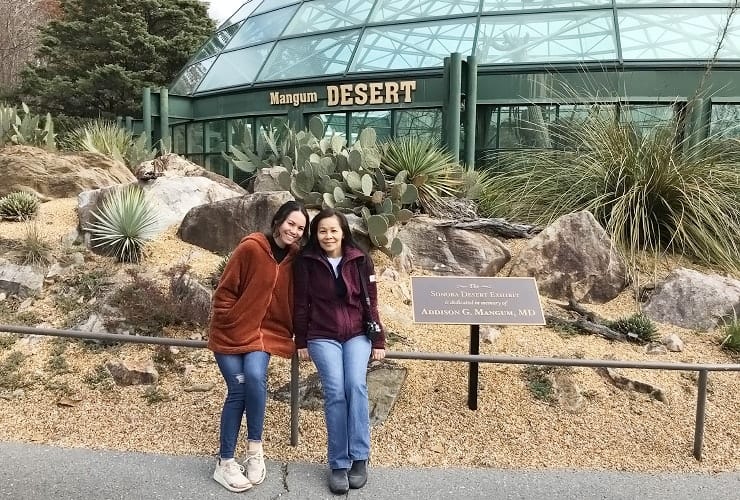
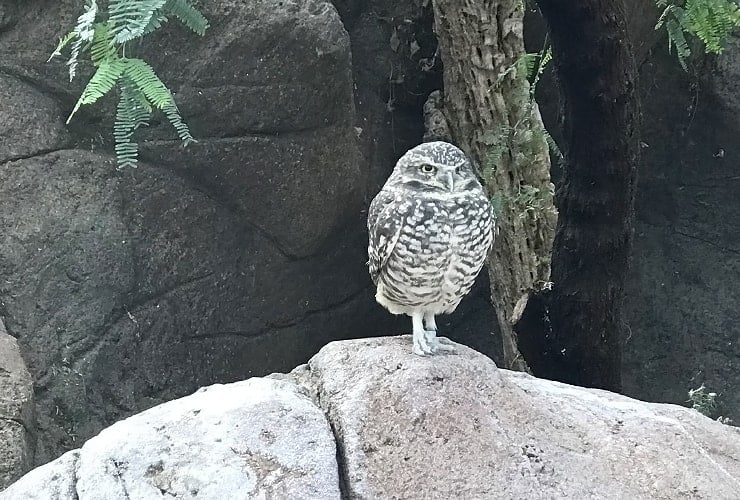
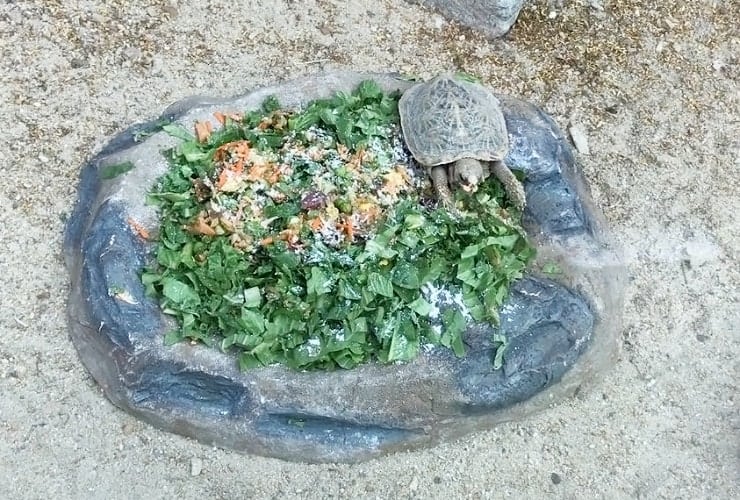
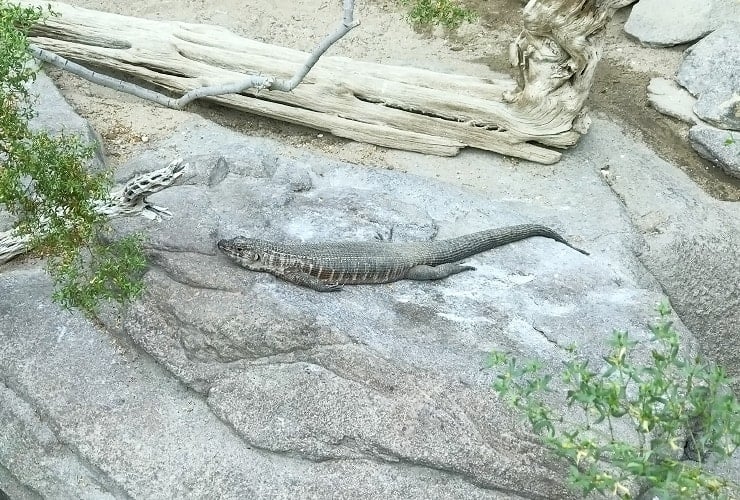
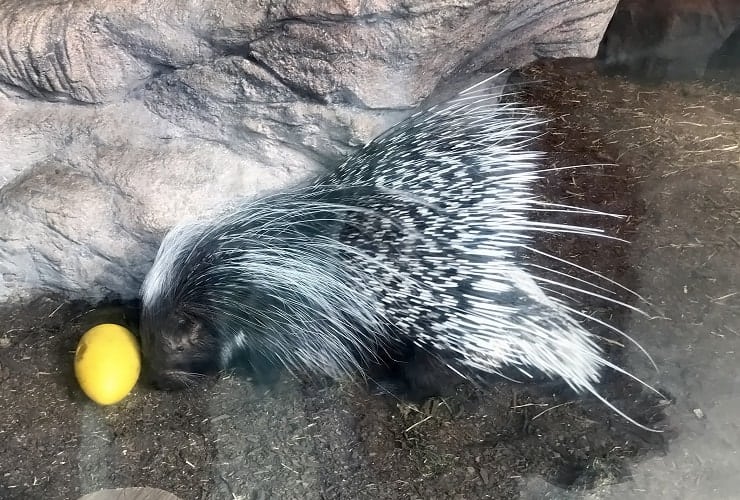
The Desert is one of the more impressive exhibits in the park. It’s glass-domed façade and arid surrounding sets the stage nicely. You’ll see all manner of desert dwelling animals, birds and plant life inside. You’ll see Pygmy Spiny-tailed Skinks, an ever-so-cool Borrowing Owl, a Pancake Tortoise, a lounging Gorongosa Girdled Lizard and an amazing Cape Porcupine pushing a ball around with his nose. In the air and on the tree limbs are White-winged Doves, House Finches, White-Headed Buffalo Waeavers, a Laughing Kookaburra and Horned Larks.
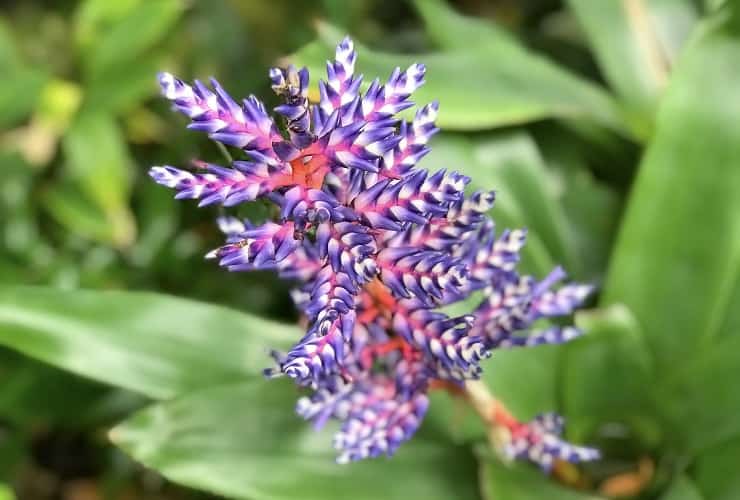
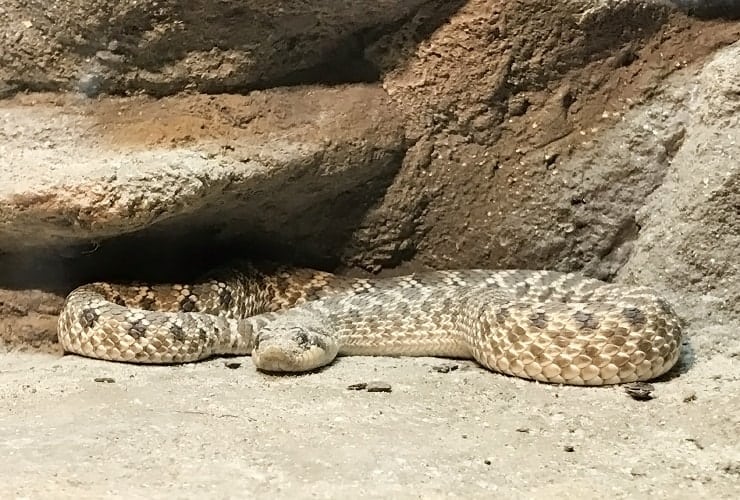
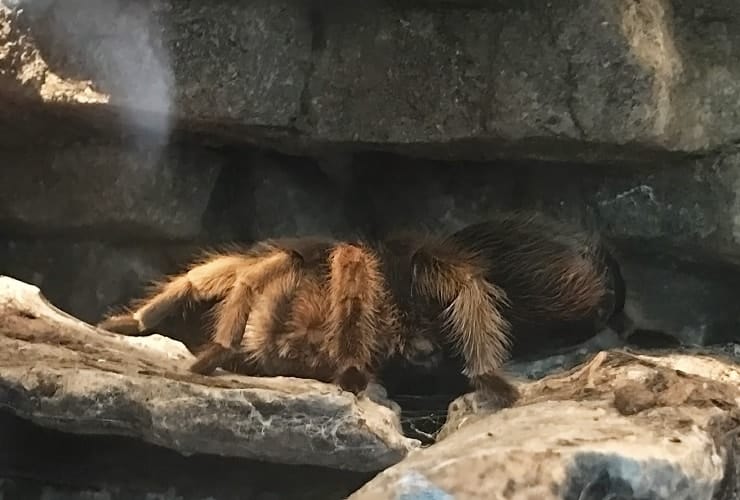
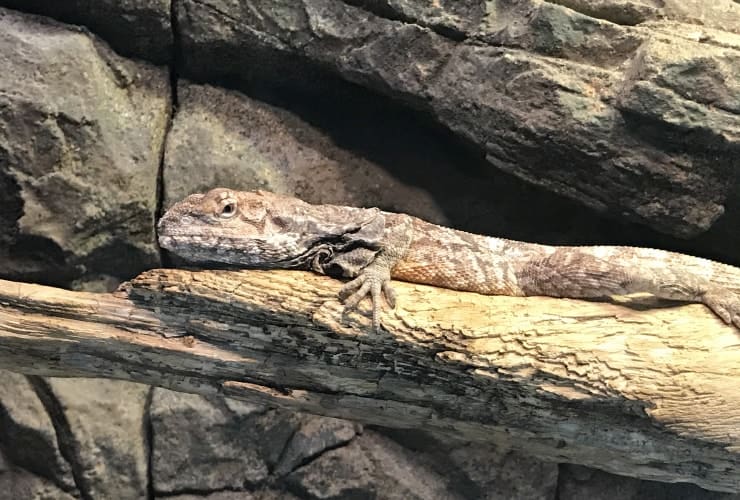
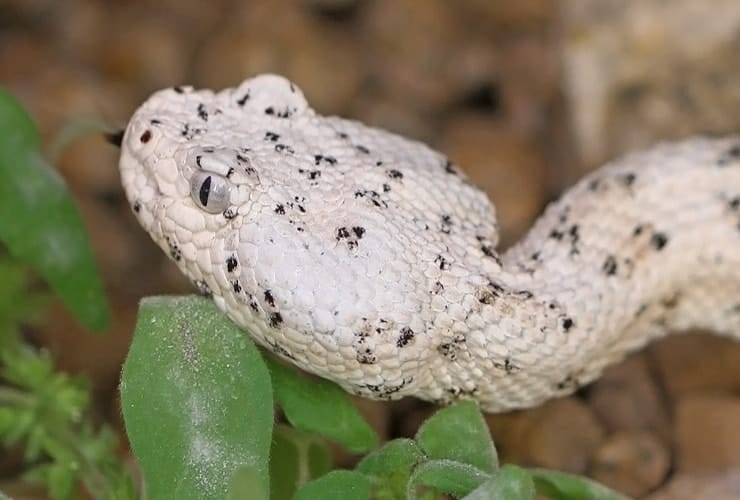
Among the exotic plants are an Anacacho Orchid tree, Arizona Agave, Blue Palo Verde flowers and a variety of cacti including Barrel Cactus, Creeping Devil, Turks Head and Saguaro. There is another section filled with animals that prefer the dark corners and dwelling beneath the surface. They include a Western Hognose Snake, a Desert Tarantula, a Frilled Dragon, a Banded Rock Rattlesnake and a plethora of Vampire Bats.
Ocelot
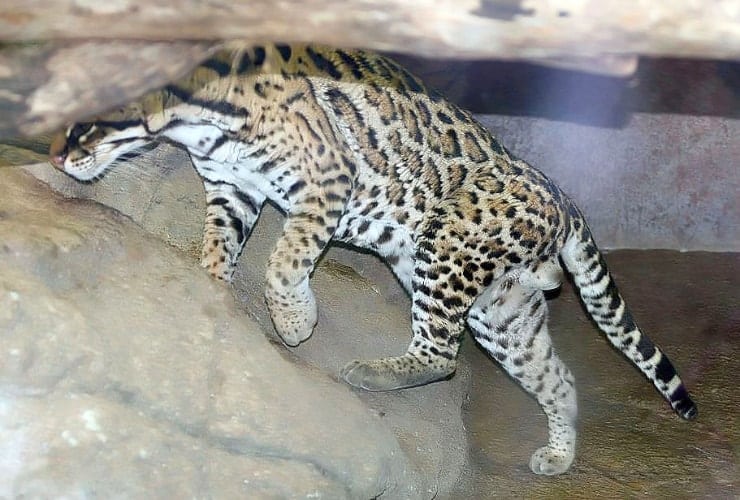
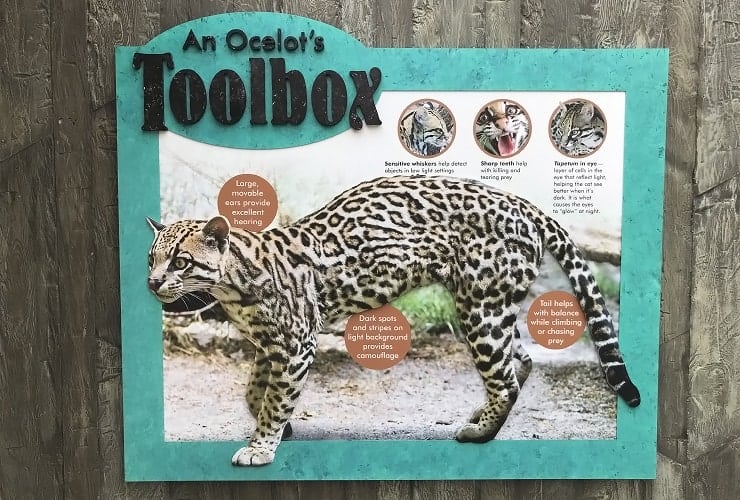
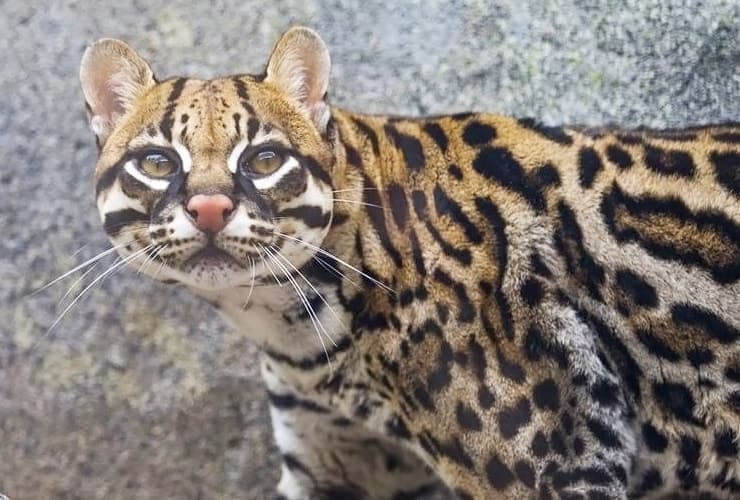
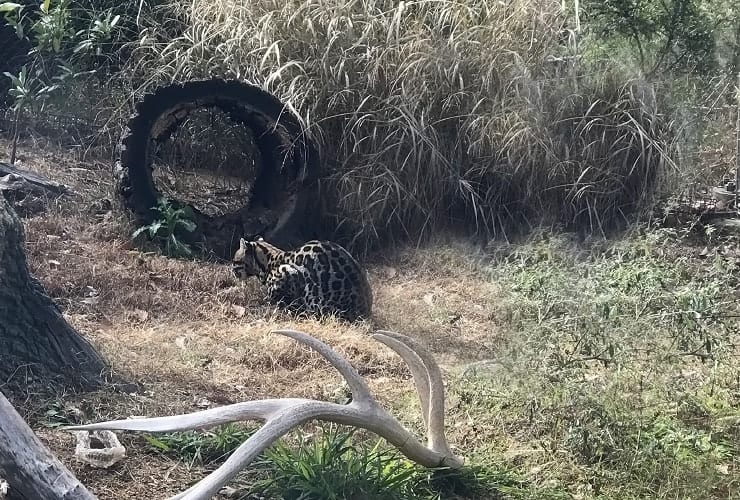
Just outside the Desert is a pen that houses a few Ocelots. They can sometimes be difficult to find but, as they are breathtakingly beautiful, it is worth a look. We stopped in on our way into the dome getting a few good looks and also when we left. Ocelots are solitary and secretive who spend much of their time laying on the ground but are quite graceful when on the move. They are most noted by their unique combination of spots and stripes sporting a single isolated white spot on the back of their ears.
Honey Bee Garden
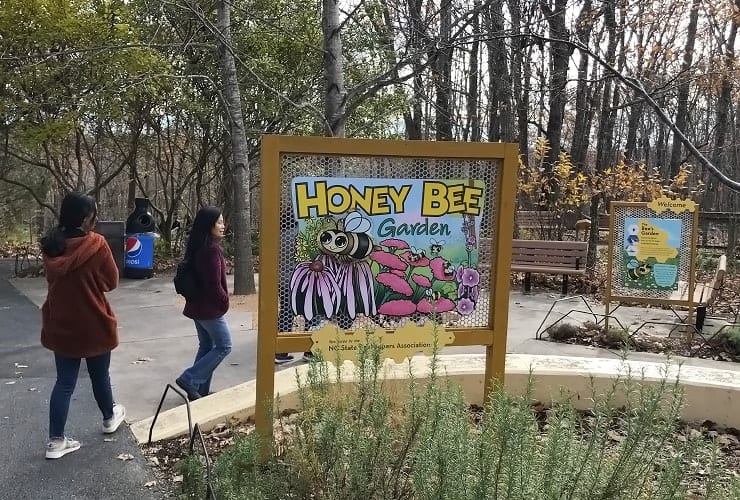
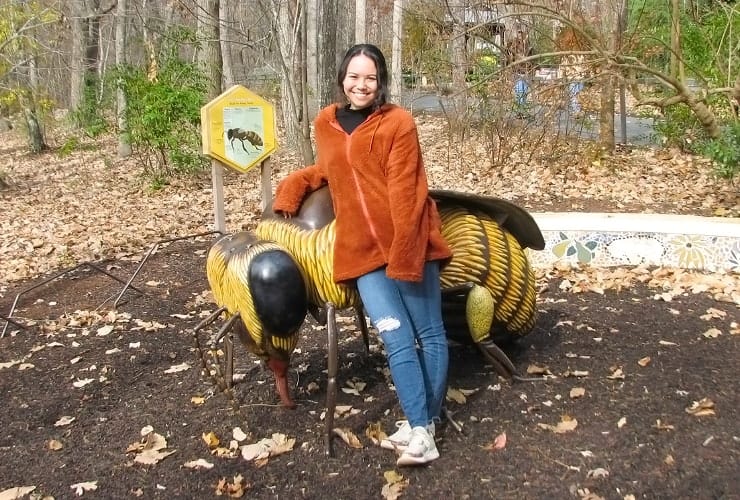
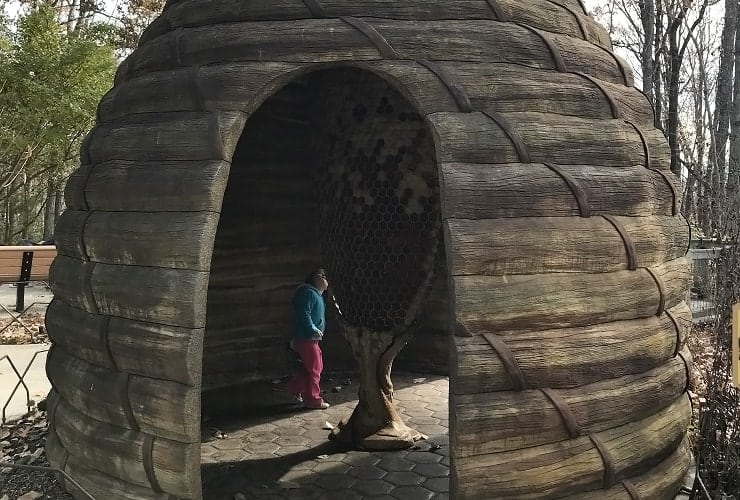
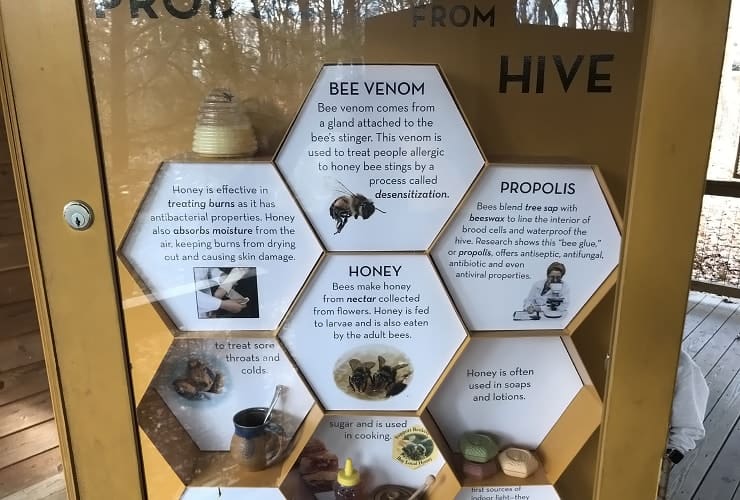
The last showcase on the North America side is the Honey Bee Garden. It is more of an educational exhibit though there is an actual bee hive. The little ones will insist on a picture sitting atop the oversized Worker Bee and the adults will enjoy learning more about the habits and benefits of bees in everyday life.
NC Zoo Art
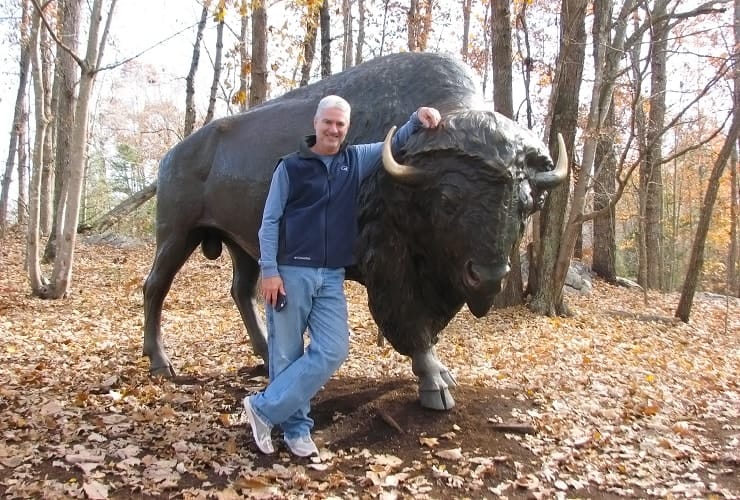
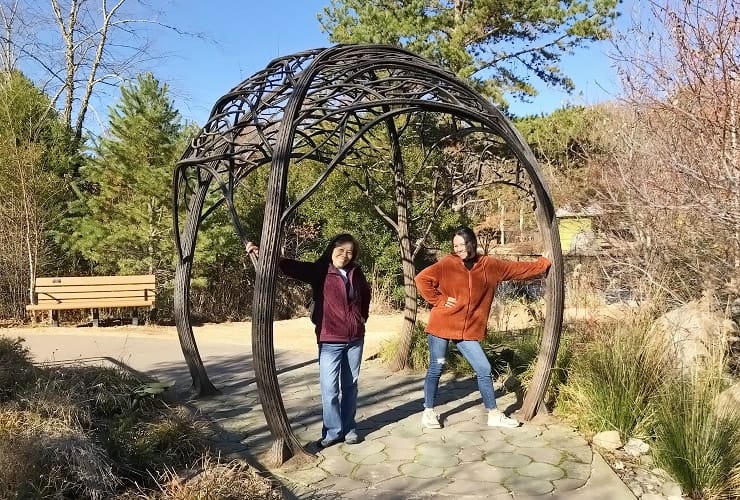
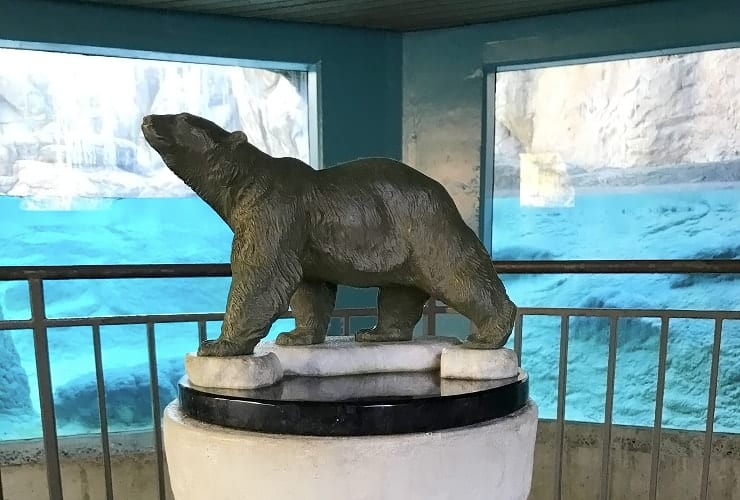
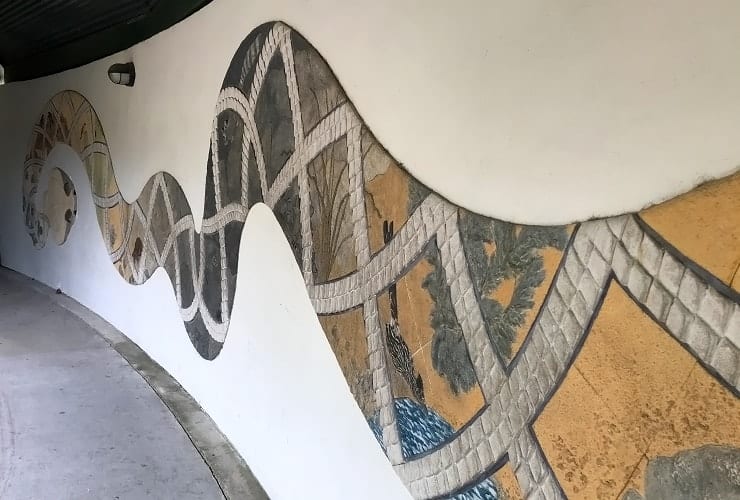
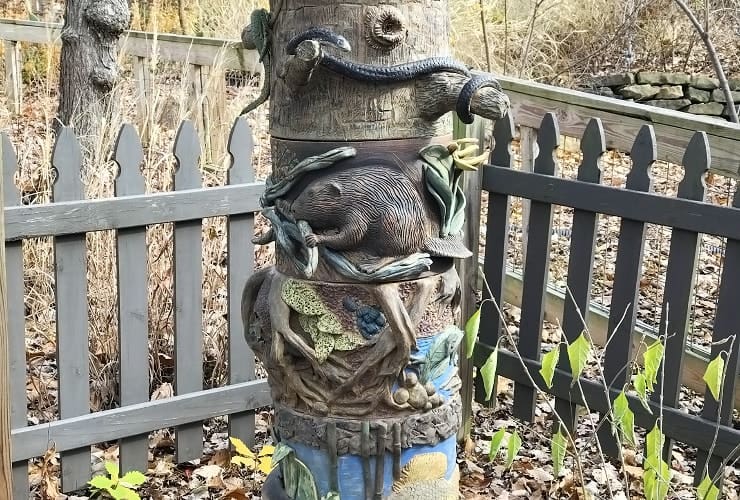
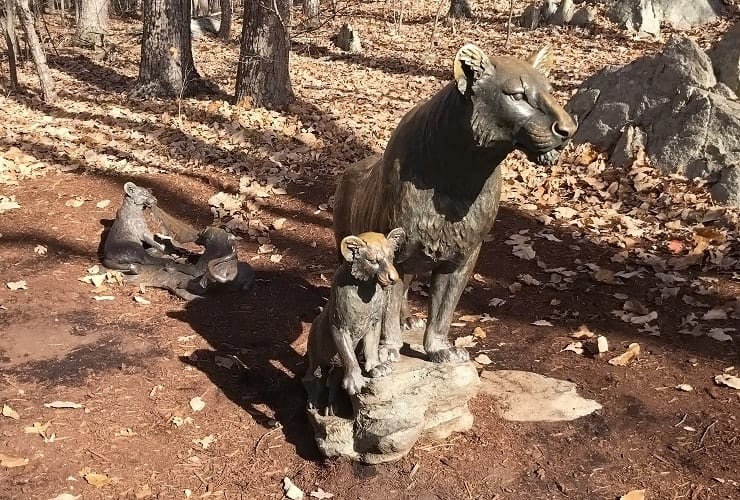
Throughout the park there are beautiful pieces of art. Each is relevant to its surroundings and represent art forms such as bronze, ceramic, sketches, murals and even a totem pole.
Africa Section
Forest Aviary
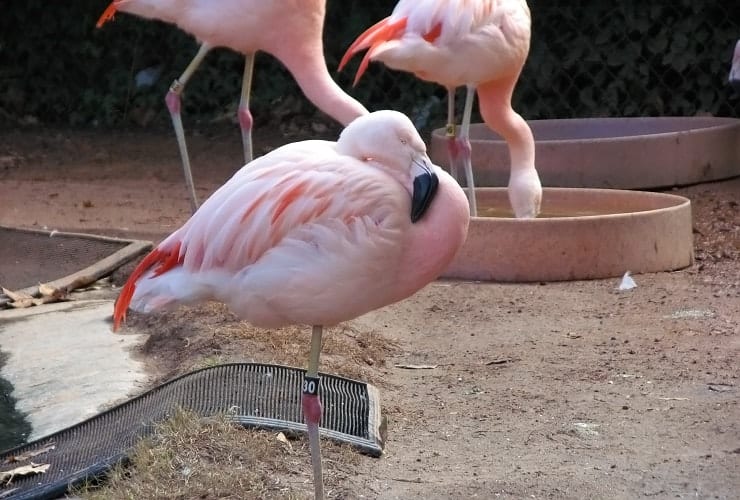
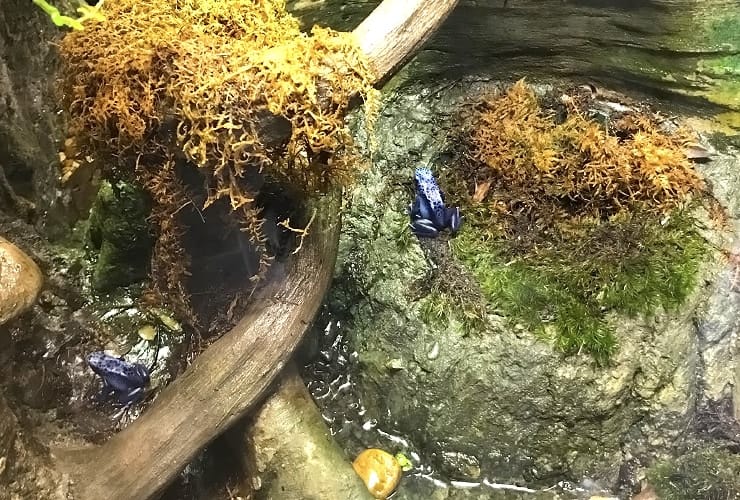
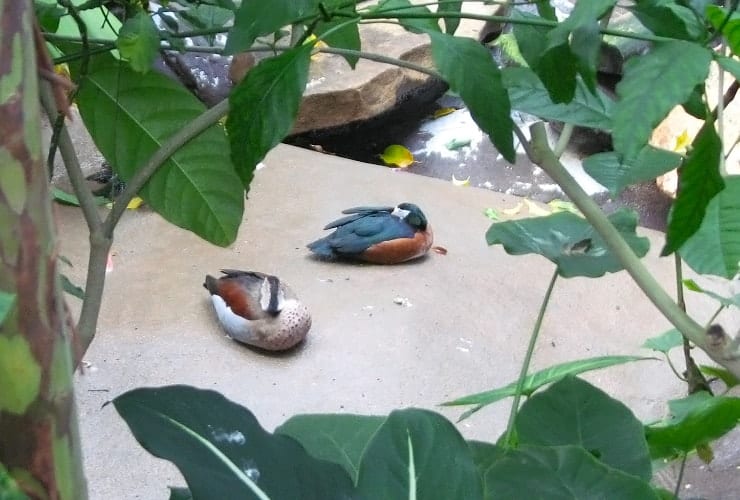
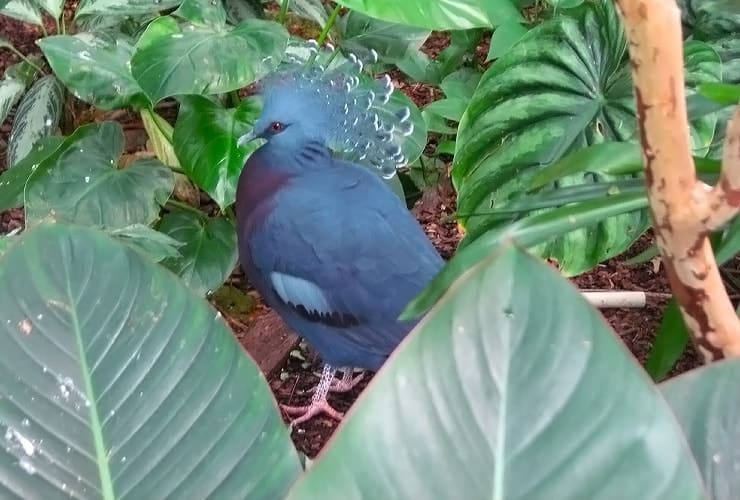
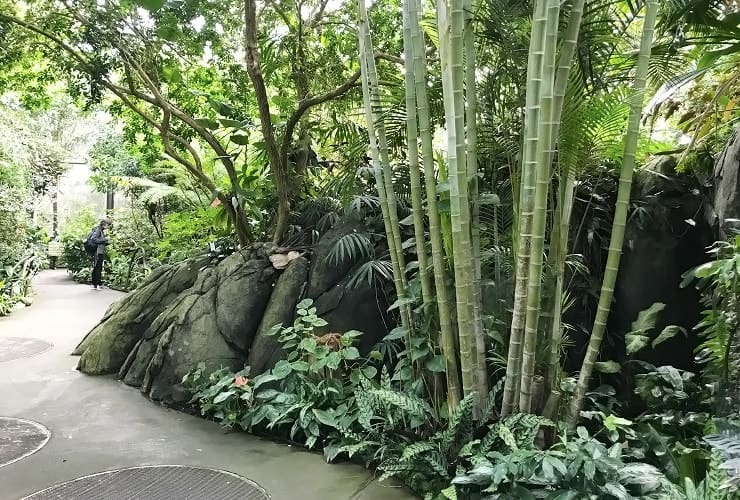
First up in the Africa section of the park is the Forest Aviary. It serves as a sanctuary for over 100 birds (36 species), a wide variety of tropical plants along with some poison frogs and a Red-footed Tortoise. As you approach the entire aviary you are greeted by a family of Chilean Flamingos lounging about. The interior starts with a few Pleasing Poison Dart Frogs and a Panamanian Golden Frog which is quickly followed by the tropical interior itself. Among the tropical plants are a variety of bamboo and palm species as well as Vanilla Orchids, black Sapote and Red Ginger. Above, and on the ground, you’ll find birds that range from Victoria Crowned Pigeons and Blue-naped Mousebirds to ringed Teal and Golden-crested Mynas.
Gorillas
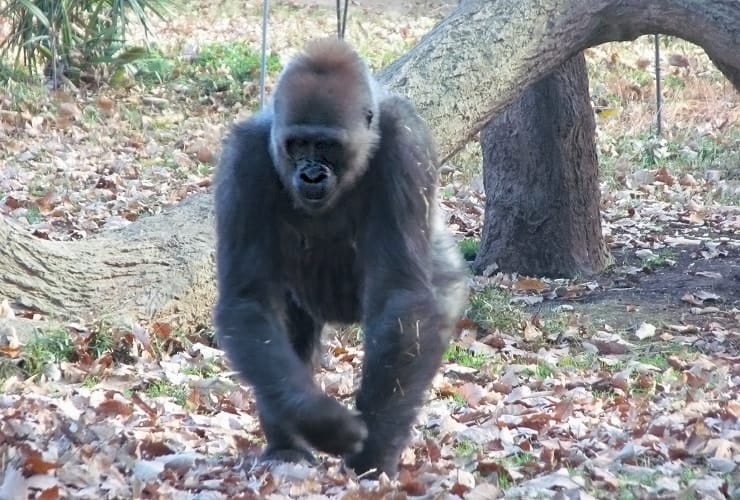
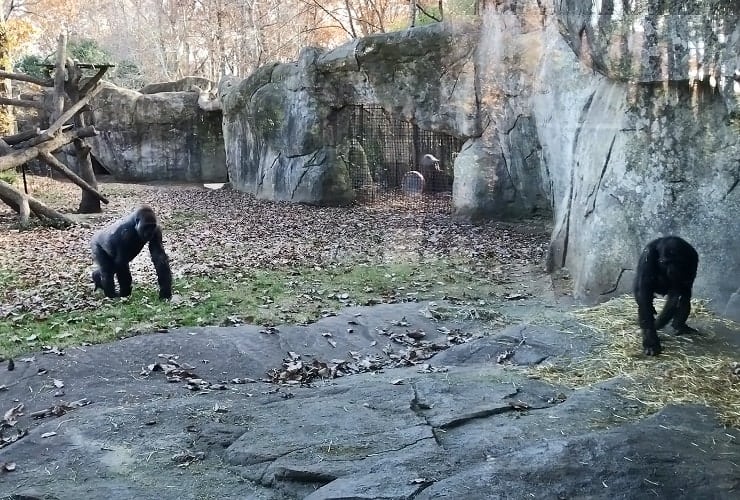
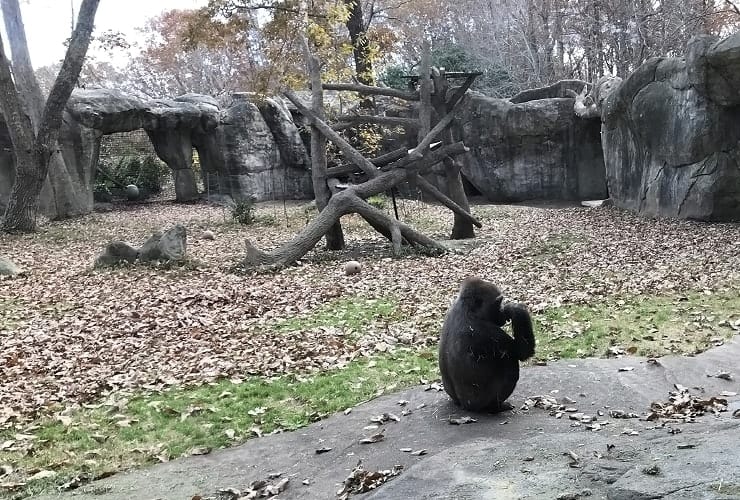
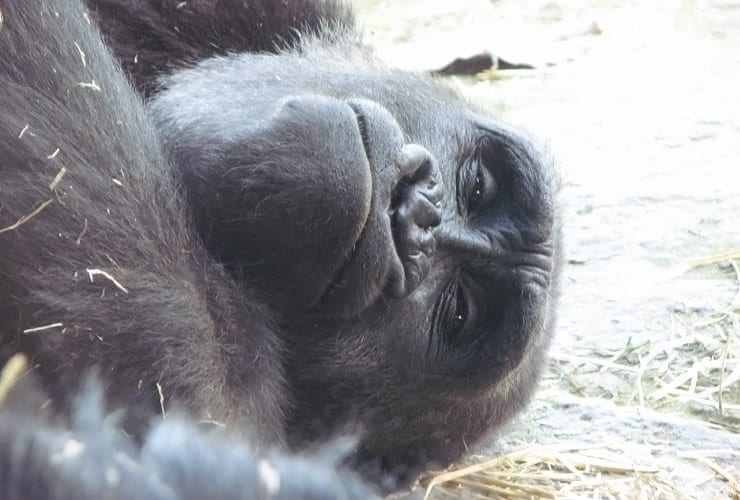
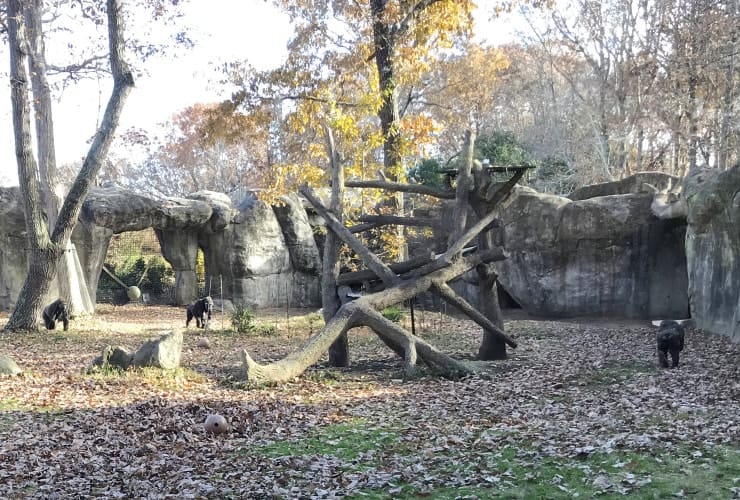
Many consider the Western Lowland Gorilla pen to be the highlight of the zoo. These troop of seven spend a good amount of their time resting and relaxing. Born in 1983, Mosuba is the dominant male Silverback of the troop. Bomassa, Apollo and Dembe were born in 2012 and are the youngest. It’s best to visit as early in the morning as possible as they tend to be more active then.
Chimpanzees
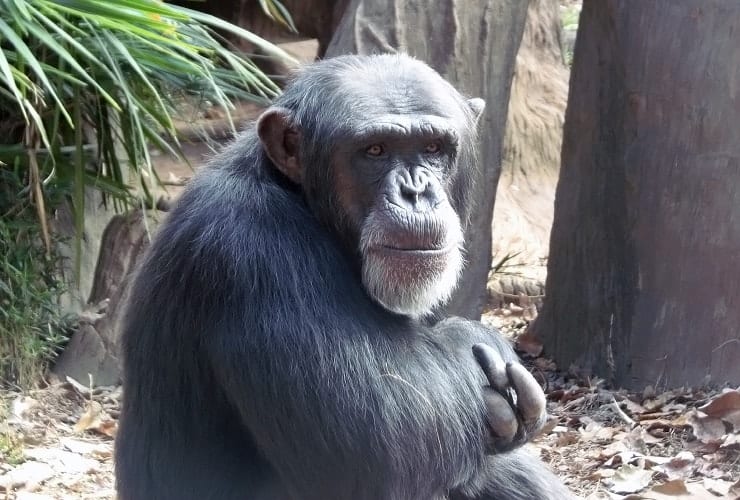
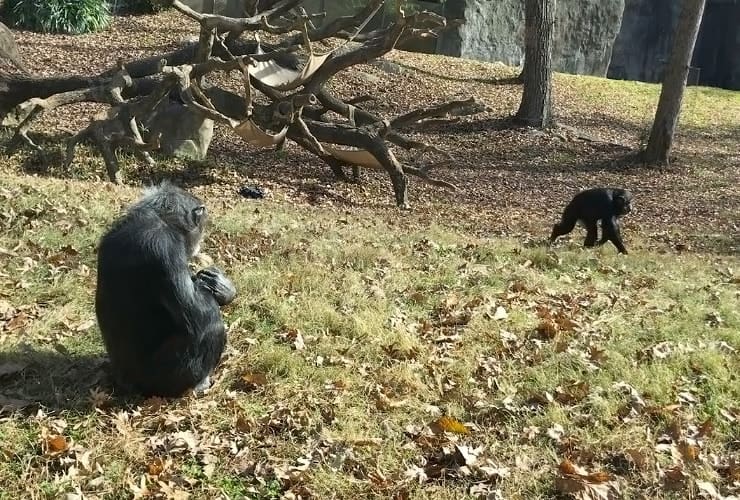
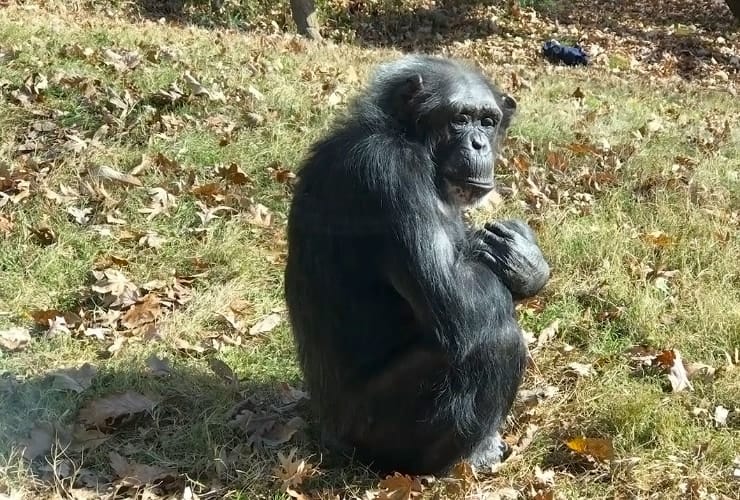
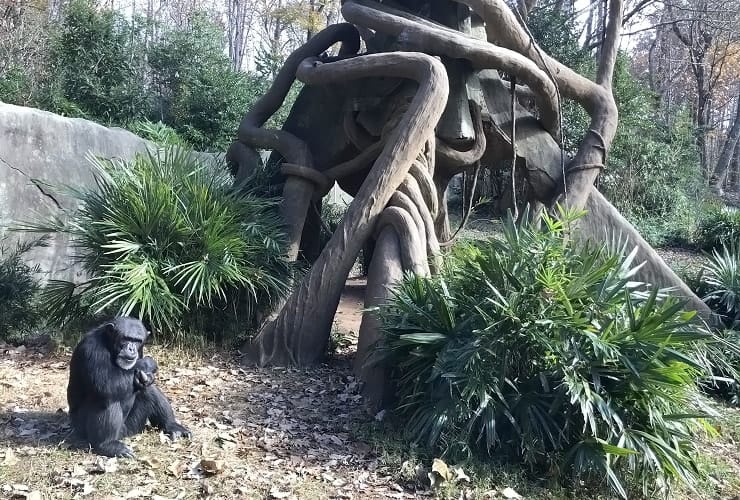
This exhibit is called the Kitera Forest and is home to several very social chimpanzees. Of all the areas of the zoo this is the most immersive. The primary viewing area has windows that rise 20 feet straight up that follow a curve which mirrors the grounds. This ensures you have great views from virtually anywhere. This is key since the chimps are far more active than the gorillas. What is most noticeable is the similarity between the chimps and humans. While most animals in a zoo are oblivious or, at best, vaguely interested in human visitors, the chimpanzees are not only aware but actively engage and acknowledge our presence.
Lions
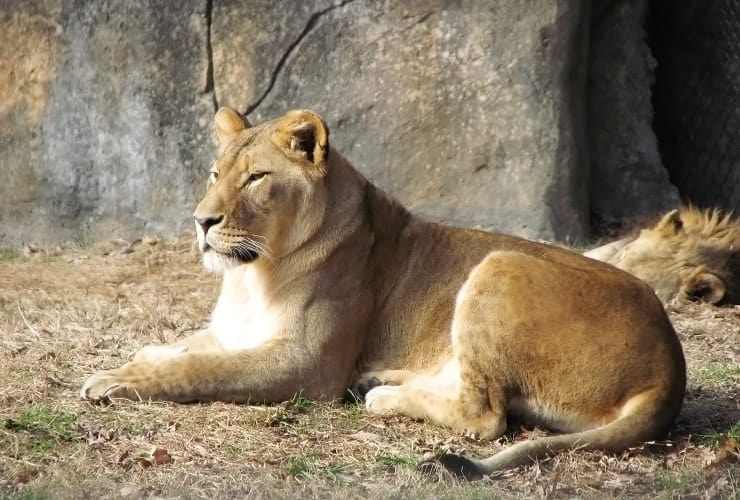
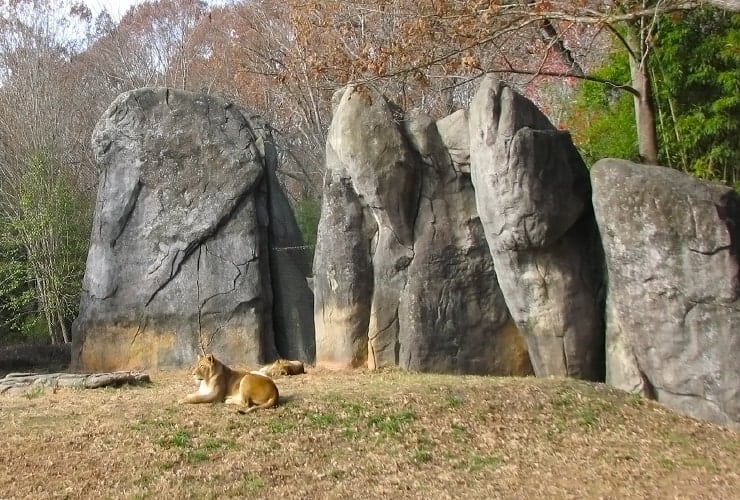
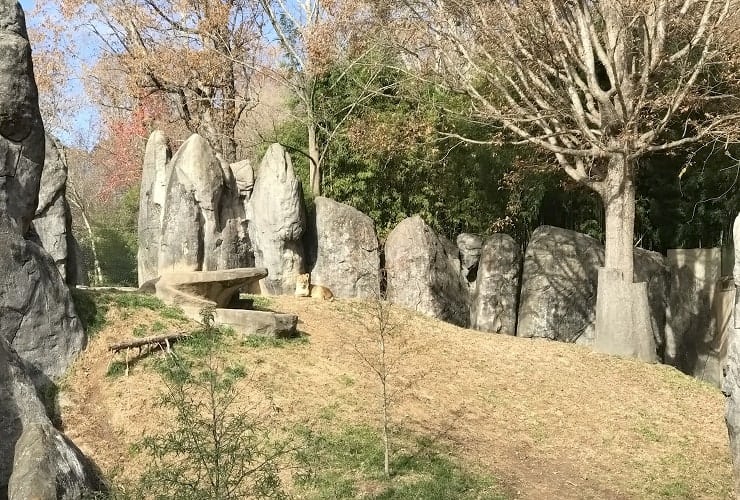
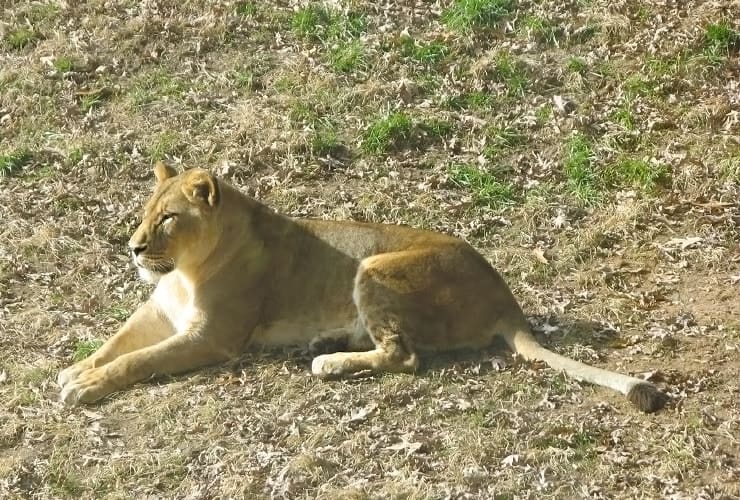
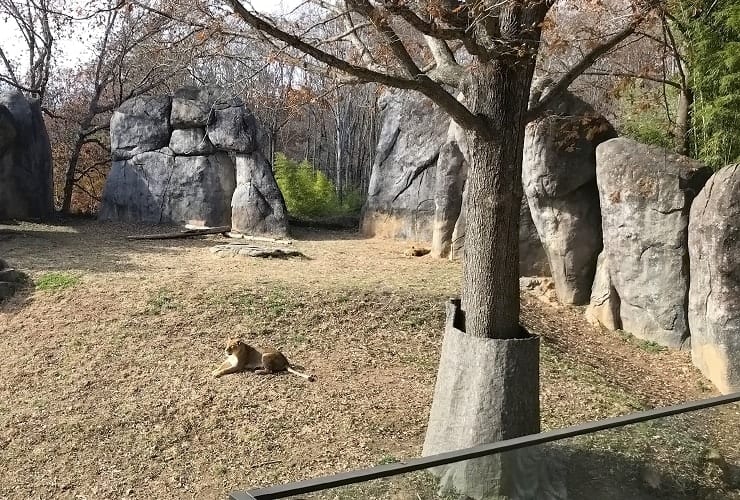
No visit to a zoo is complete until you’ve seen the lions. Even if they don’t move an inch they have a distinct presence. In fact, given that they can sleep as much as 20 hours in a day, you’re lucky if you can catch a glimpse of them awake. The pen for the lions is beautiful featuring massive vertical rock faces and a dramatic slope in two sides. Interesting to note that while the male is larger, it only appears so much bigger than the female because of its mane whose primary purpose is protection of its neck in battle.
Red River Hogs
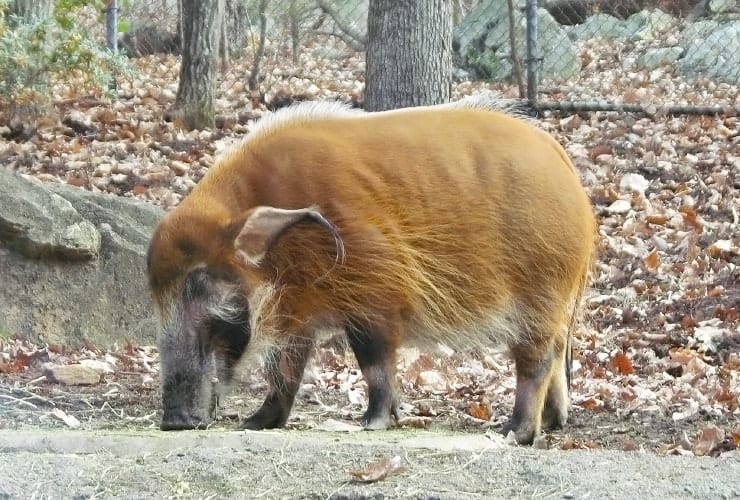
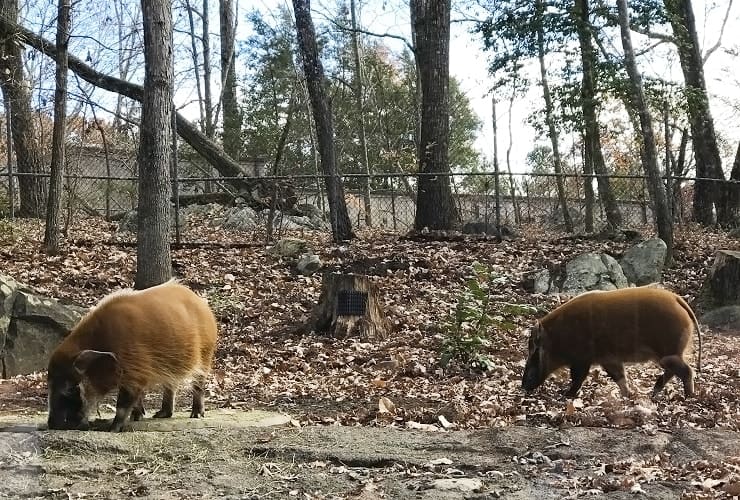
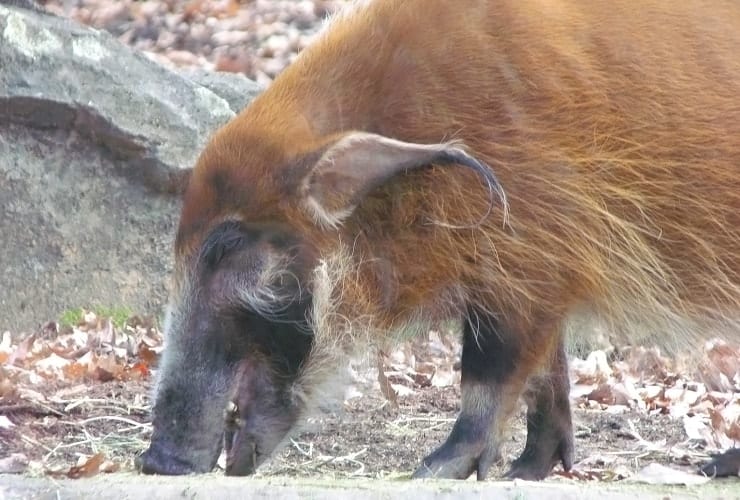
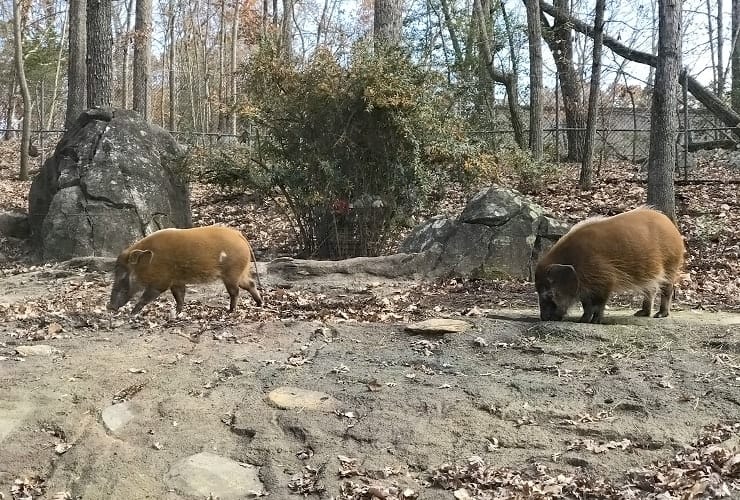
One of the more exotic looking wild pigs, the Red River Hogs are prominent in a variety of climates including rainforests, thickets and savannas. Like other pigs they are highly intelligent with an enhanced sense of smell and hearing which comes in handy when rummaging for food underground. Their trademark tusks are primarily used in battle but also help them cut through roots. In the wild they are nocturnal and tend to always be located near water sources.
Zebras, Ostriches, Giraffes
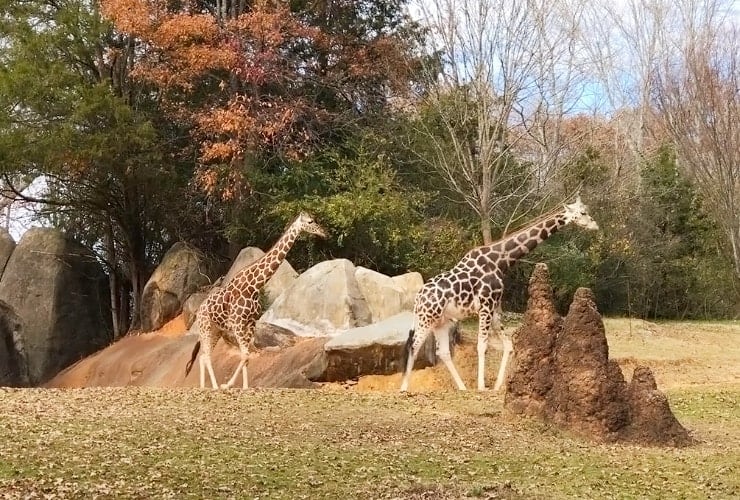
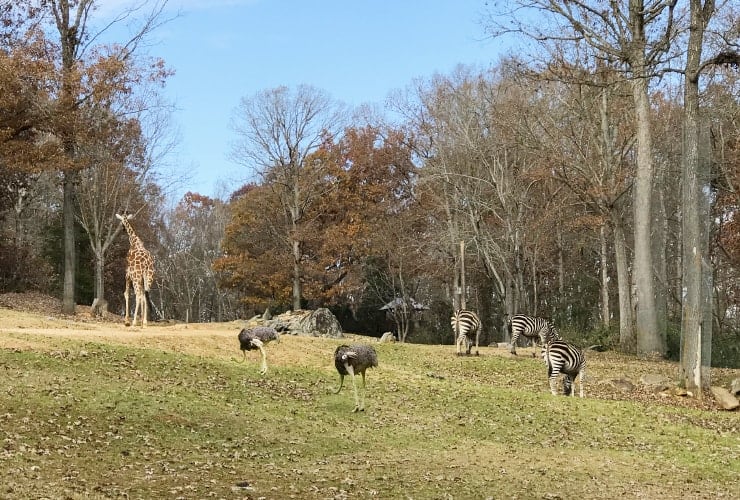
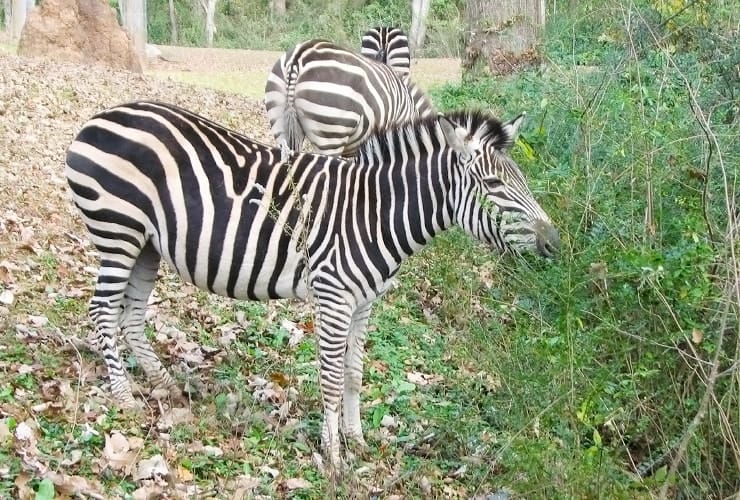
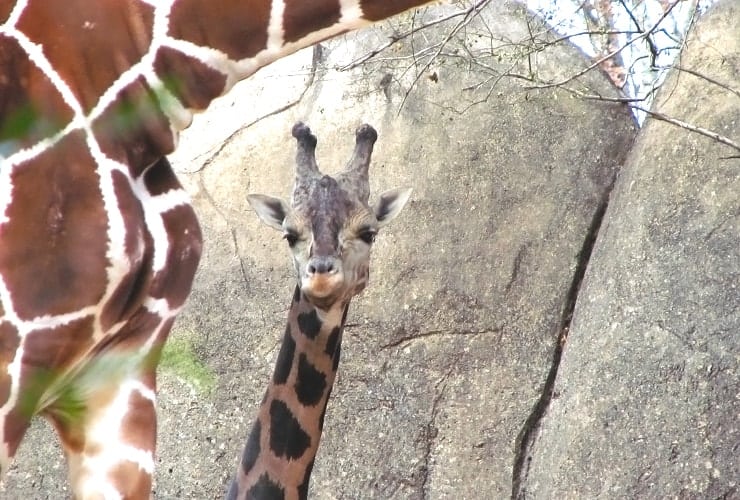
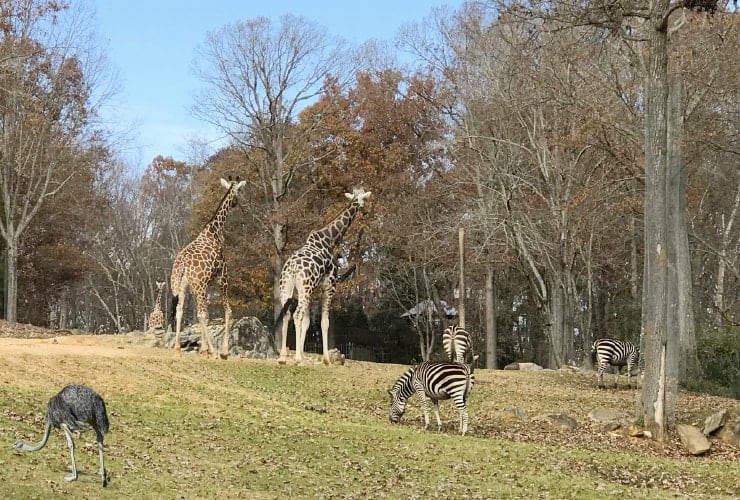
The Forest Edge habitat is home to Giraffes, Ostriches and Zebras. They coexist peacefully in the 3.5 acre (1.42ha) area that recreates the lightly wooded savannas found in Kenya. The Giraffes are a family of Mom, Dad and a baby. They have an alcove that separates them from the other inhabitants but they venture outside often. There is something utterly unique to their gait that makes them walking endlessly watchable. The Ostriches can reach up to 8’ (2.4m) in height, have life spans of 35 years and can reach running speeds in excess of 45 mph (72.4kph) with strides of 10-15’ (3-4.5m). Sometimes the eye can be deceiving . . . Zebras, despite having white underbellies, are actually black in color with white stripes.
Elephants
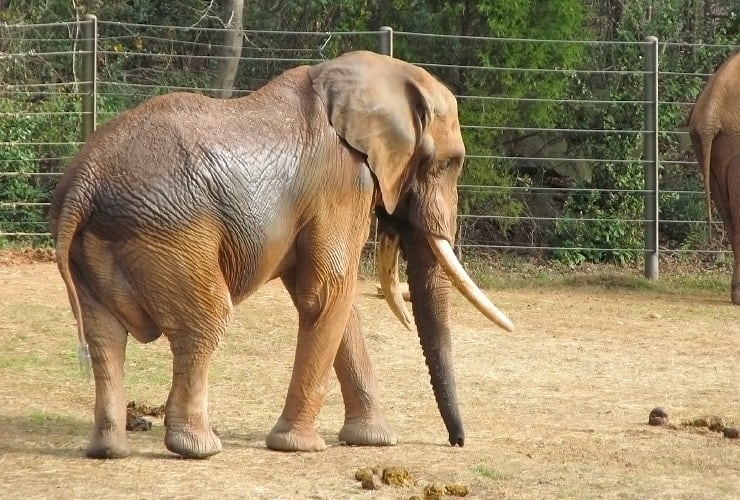
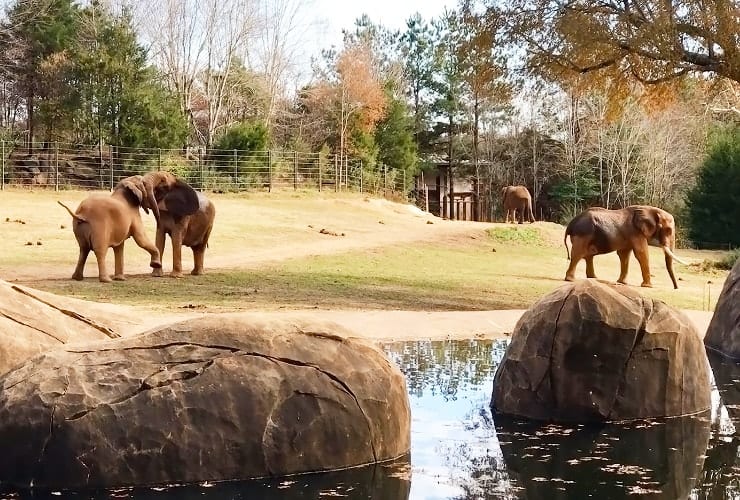
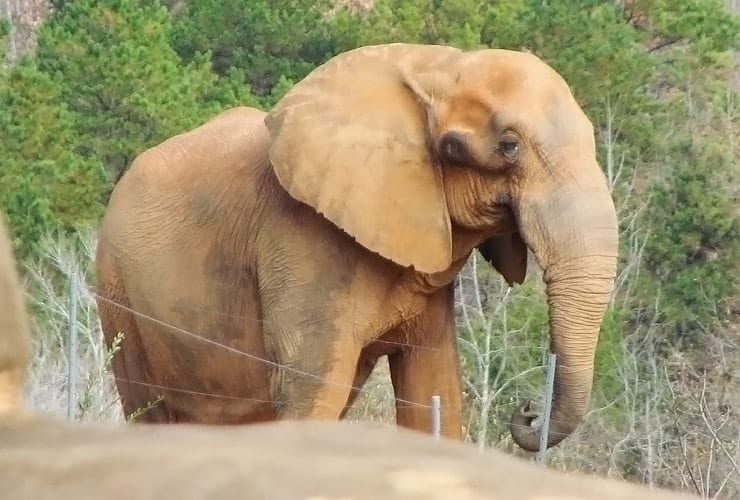
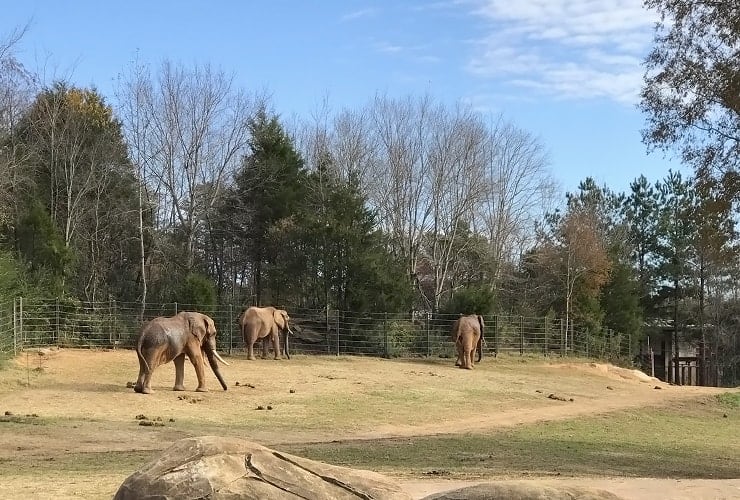
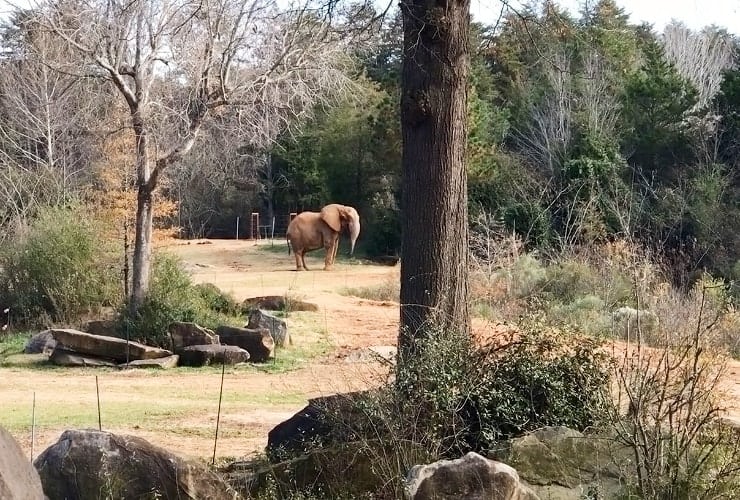
The African Forest Elephants are even more majestic in person. They are also only one of three remaining species of elephants left in the world. They have a unique family structure as the females live in a tight knit group while the males lead mostly solitary lives after they are removed from the herd at puberty, usually around 12 years of age. Elephants are the largest land animal in the world whose closest living relative is the Manatee. For some perspective, their trunks alone consist of 40,000 muscles . . . the entire human body has 650.
Watani Grasslands Reserve
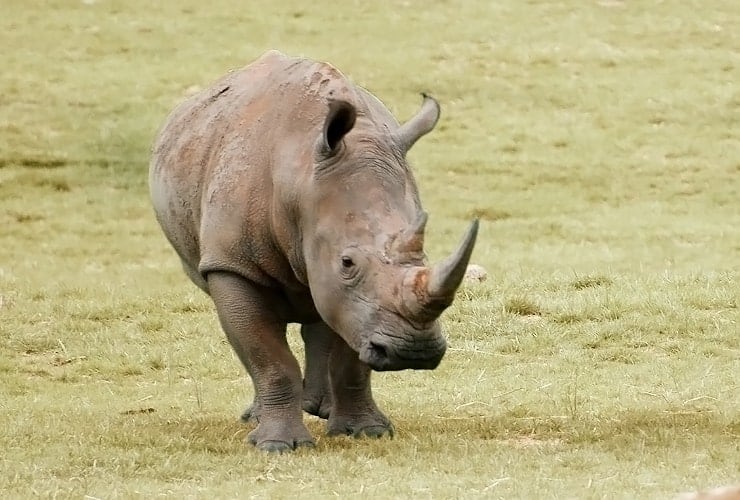
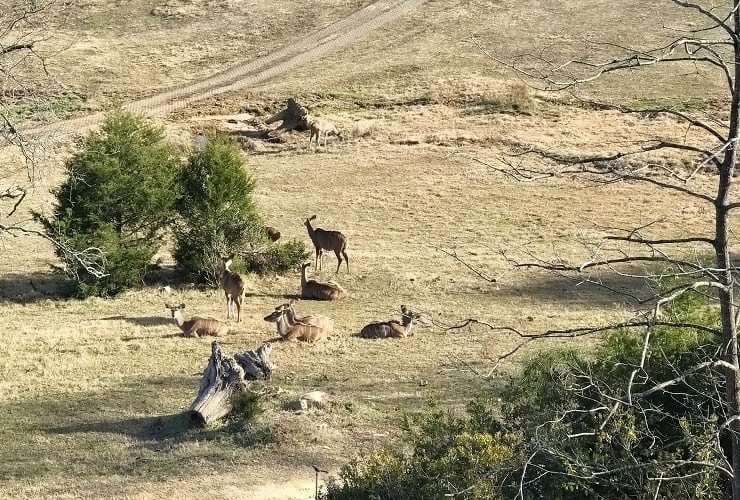
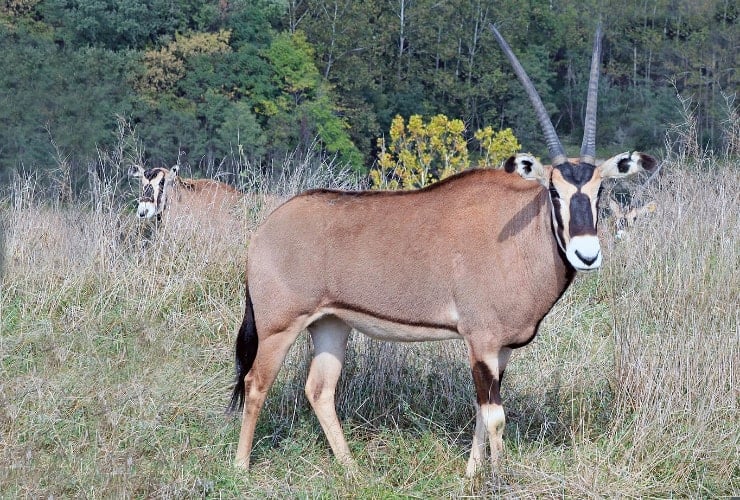
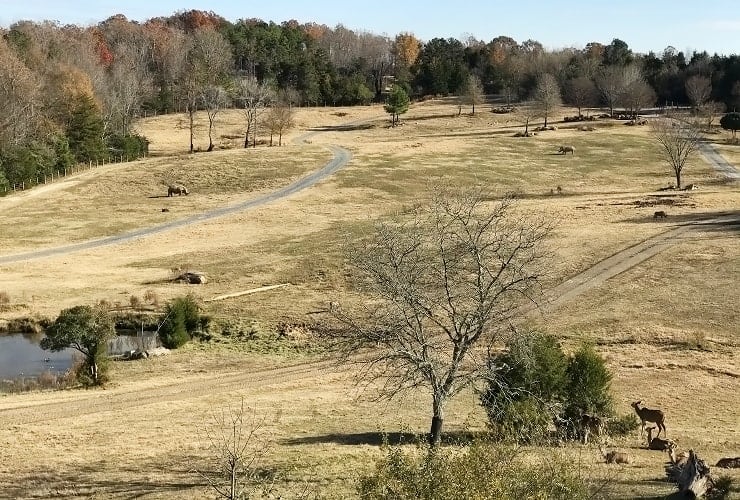
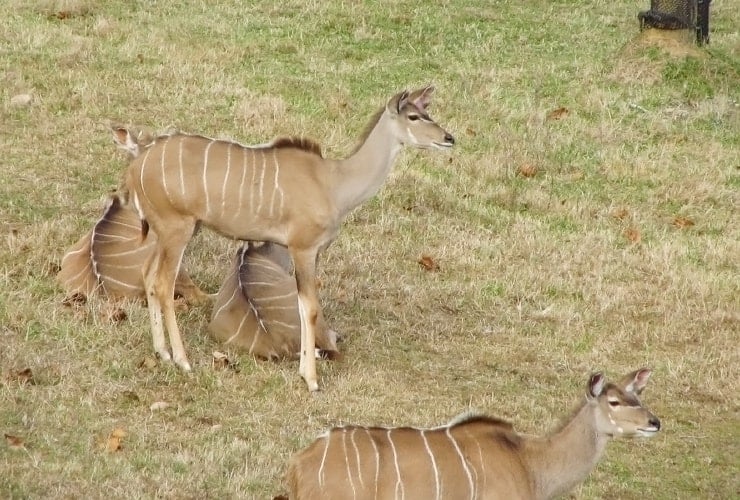
The Watani Grasslands are best enjoyed as part of the Zoofari Tour but it isn’t cheap ($850 for a 45-60 minute tour) and isn’t available in the cooler months. The reason is the 40-acre (16.2ha) Reserve is much like the African grasslands it emulates, wide open and expansive. There are a number of viewing areas including a platform beyond the Baboon area with many high-powered stationary binoculars to zoom in for better close-up views. The animals featured include Southern White Rhinoceros, Fringe-eared Oryx, Addra Gazelle, Common Waterbuck and Thompson’s Gazelle.
Baboons
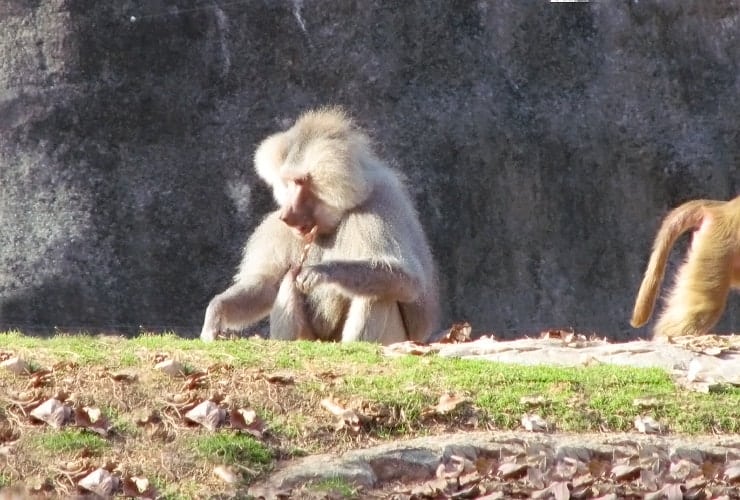
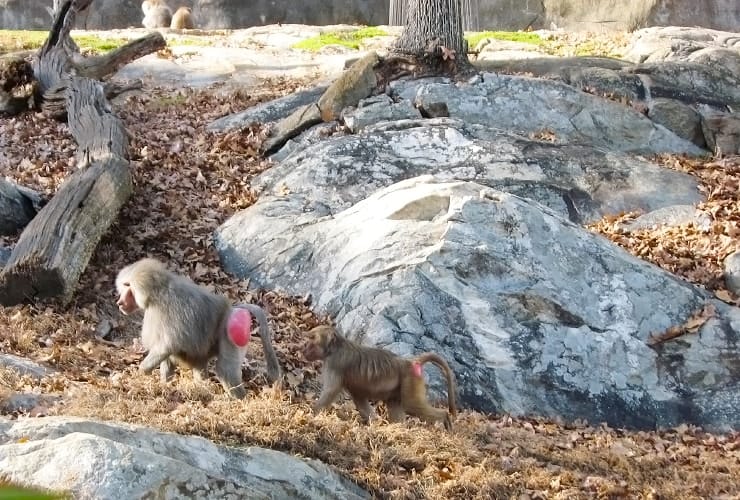
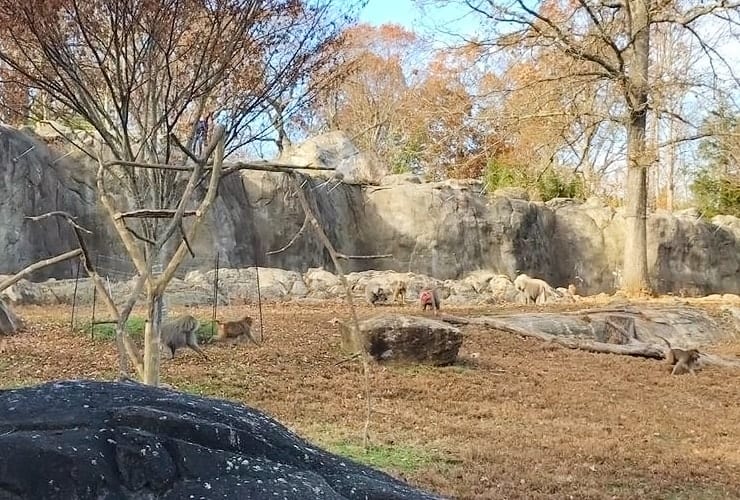
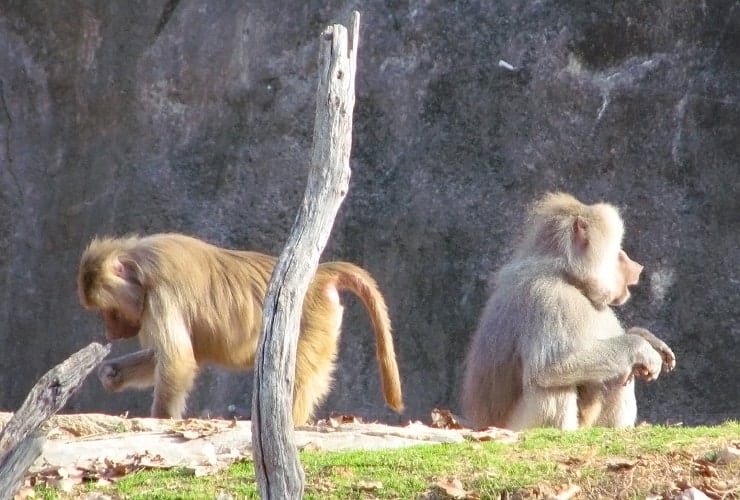
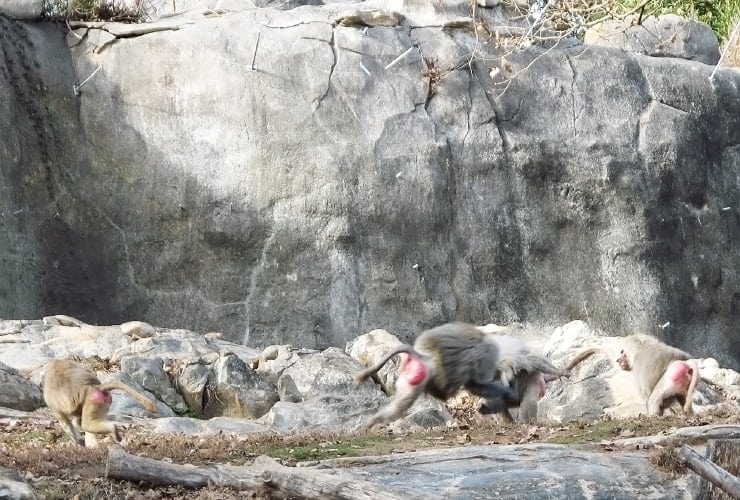
Of all the exhibits the Hamadryas Baboon area provided the most activity. There were several scuffles between dominant males which created loud screeching and much disruption and chaos among the other baboons. The males are noticeably larger than the females and more aggressive. The habitat area itself replicates the hillsides or mountainous regions where baboons are most commonly found in the wild. Baboons are the largest known monkeys, have ten distinct vocalizations they use to communicate and share approximately 94% of the same genetic make-up as humans.
Important to note that there are advantages, and disadvantages, to visiting the zoo at different times of the year. If you’re comfortable with larger crowds and significant humidity then the summer months are best to visit. All of the exhibits are open and the African animals are more active. In the off-seasons the crowds are smaller and the temperature cooler. However, many of the attractions like the giraffe feeding deck, the African expedition, the carousel, the treehouse trek and the butterfly garden are closed. As the temps decrease, the African animals tend to be less active as well.
You’ll have a great time regardless so when you visit really depends on your personal preference. We’d love to hear about your experience at the NC Zoo especially in contrast to other zoos or wild animal attractions you’ve been to elsewhere in the world.


So glad I found your blog today via IALL’s 10K Challenge! My family and I are actually planning a trip to this zoo next weekend, and I’ll definitely be keeping some of these great tips in mind! (You’ve got a new subscriber!) 🙂
Welcome! Enjoy the zoo!!!